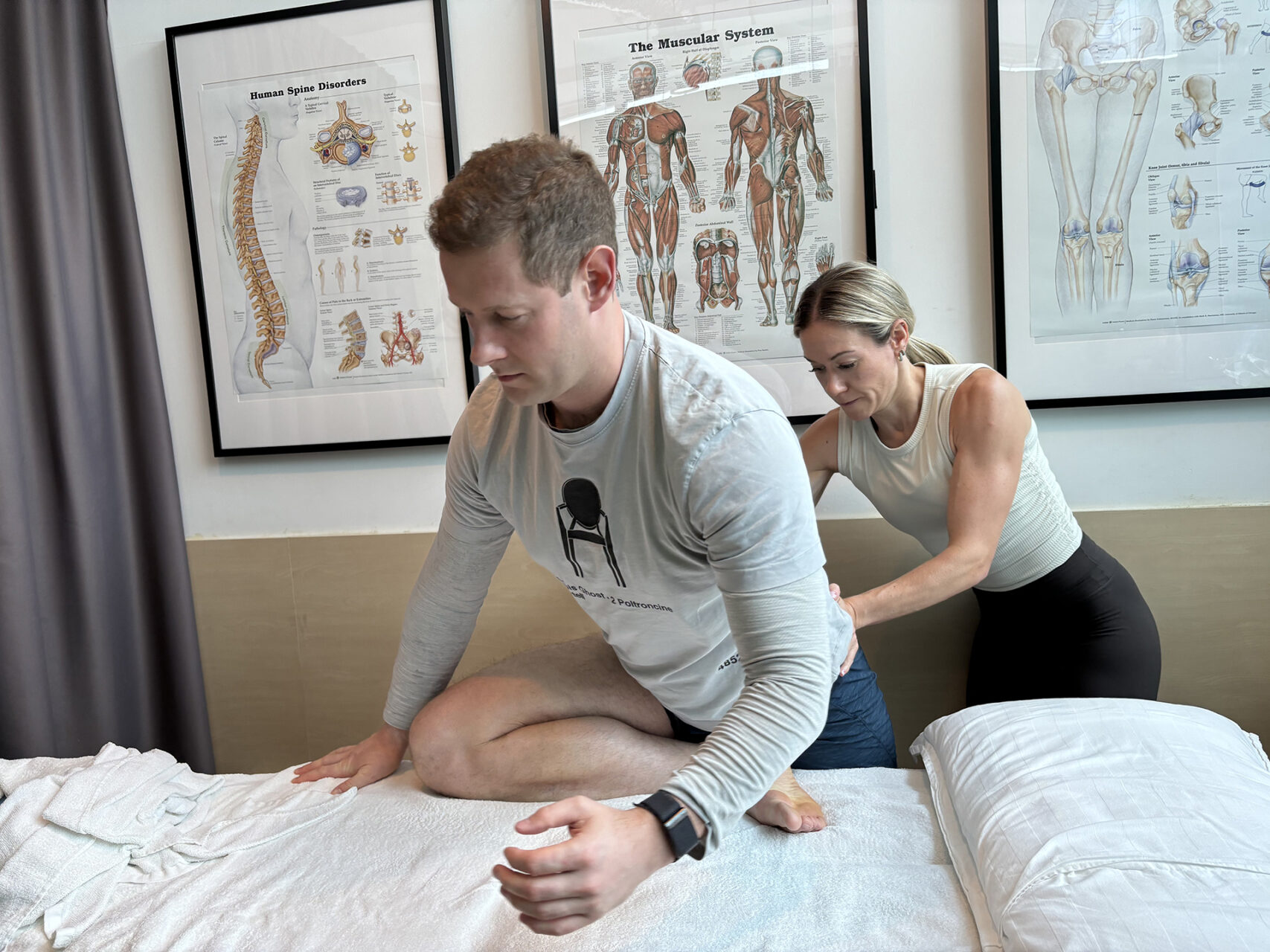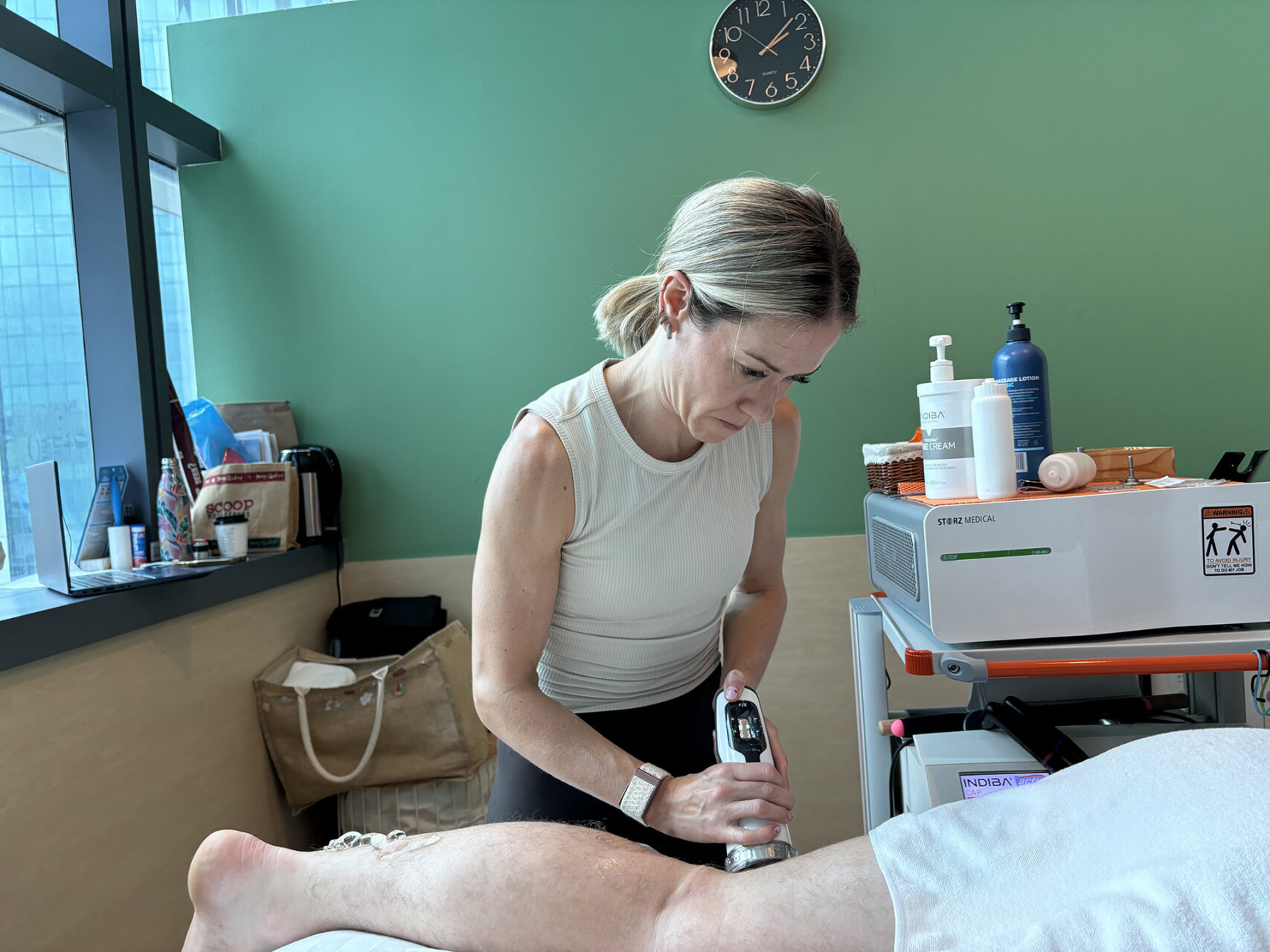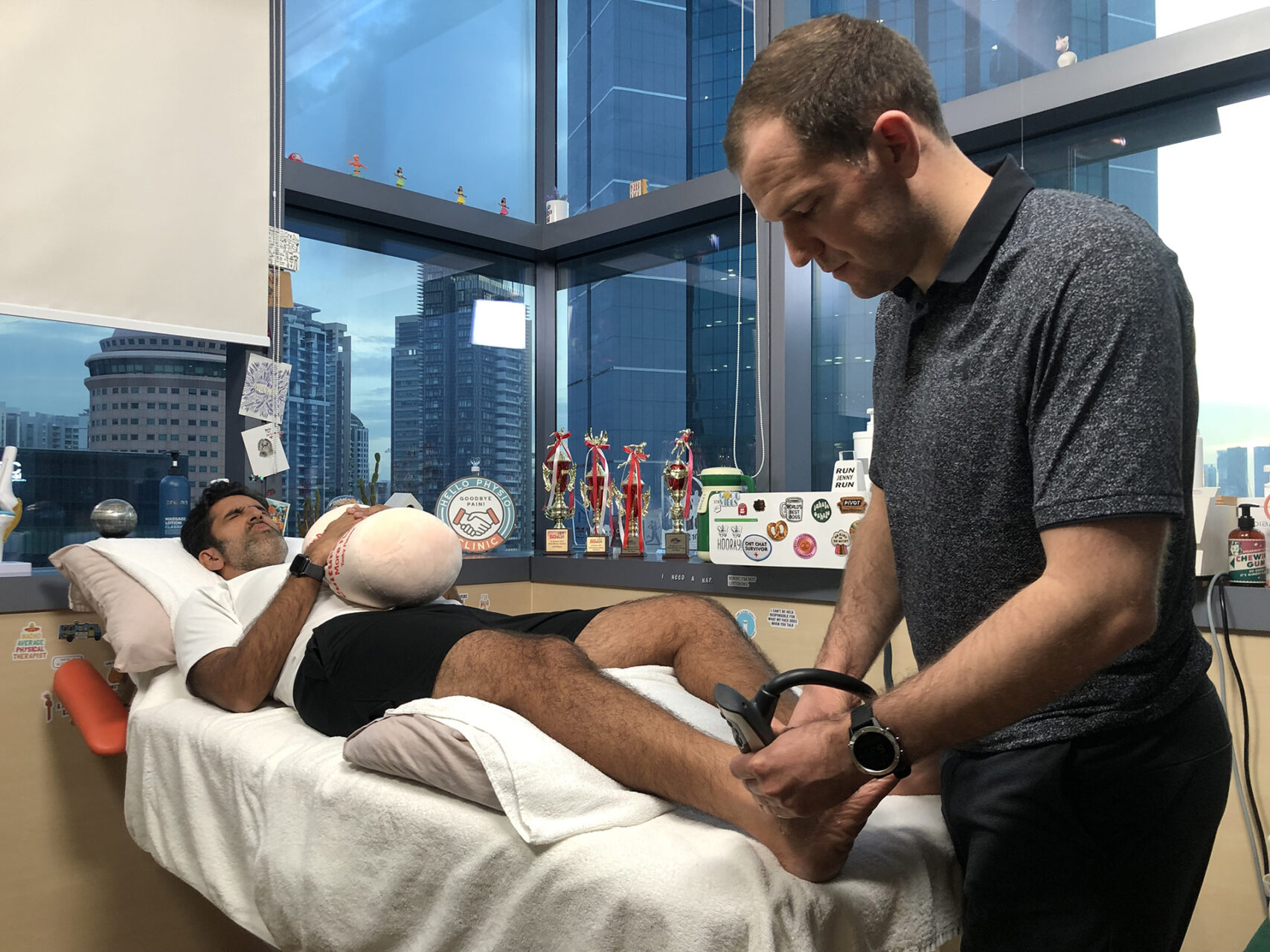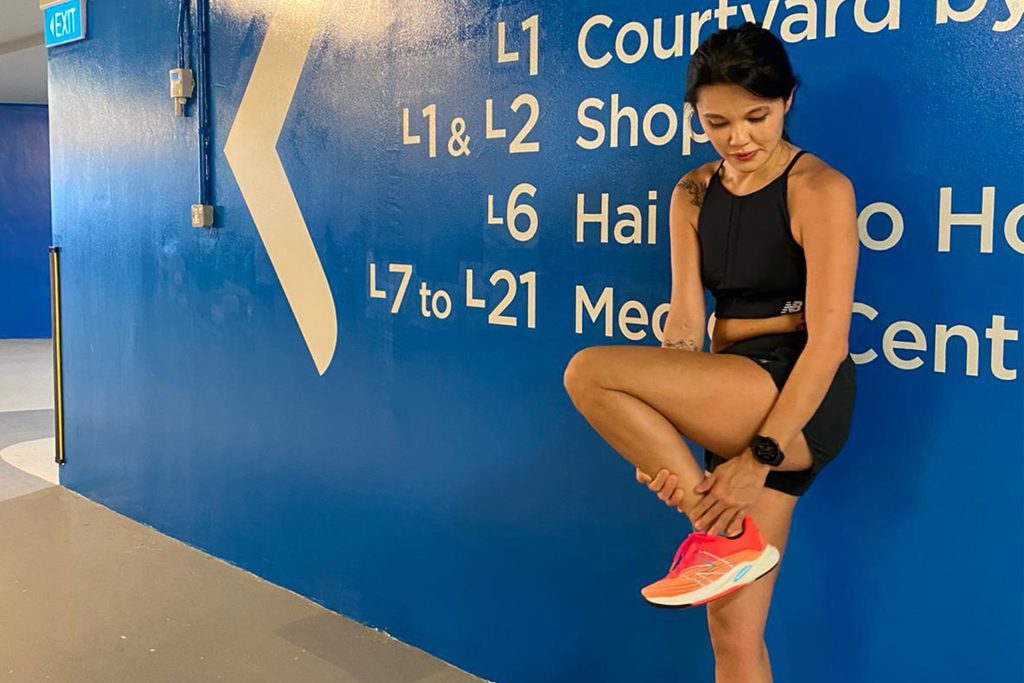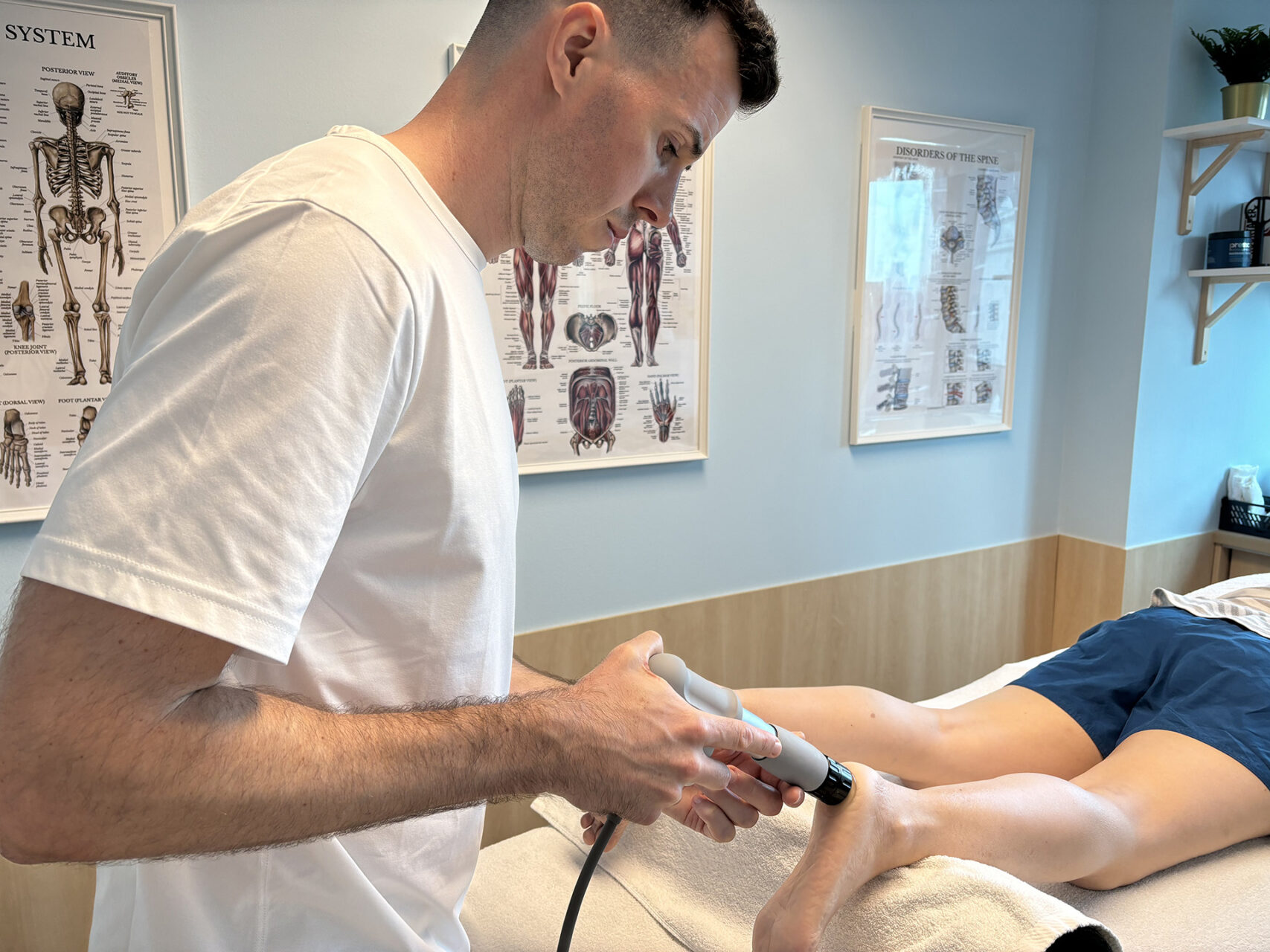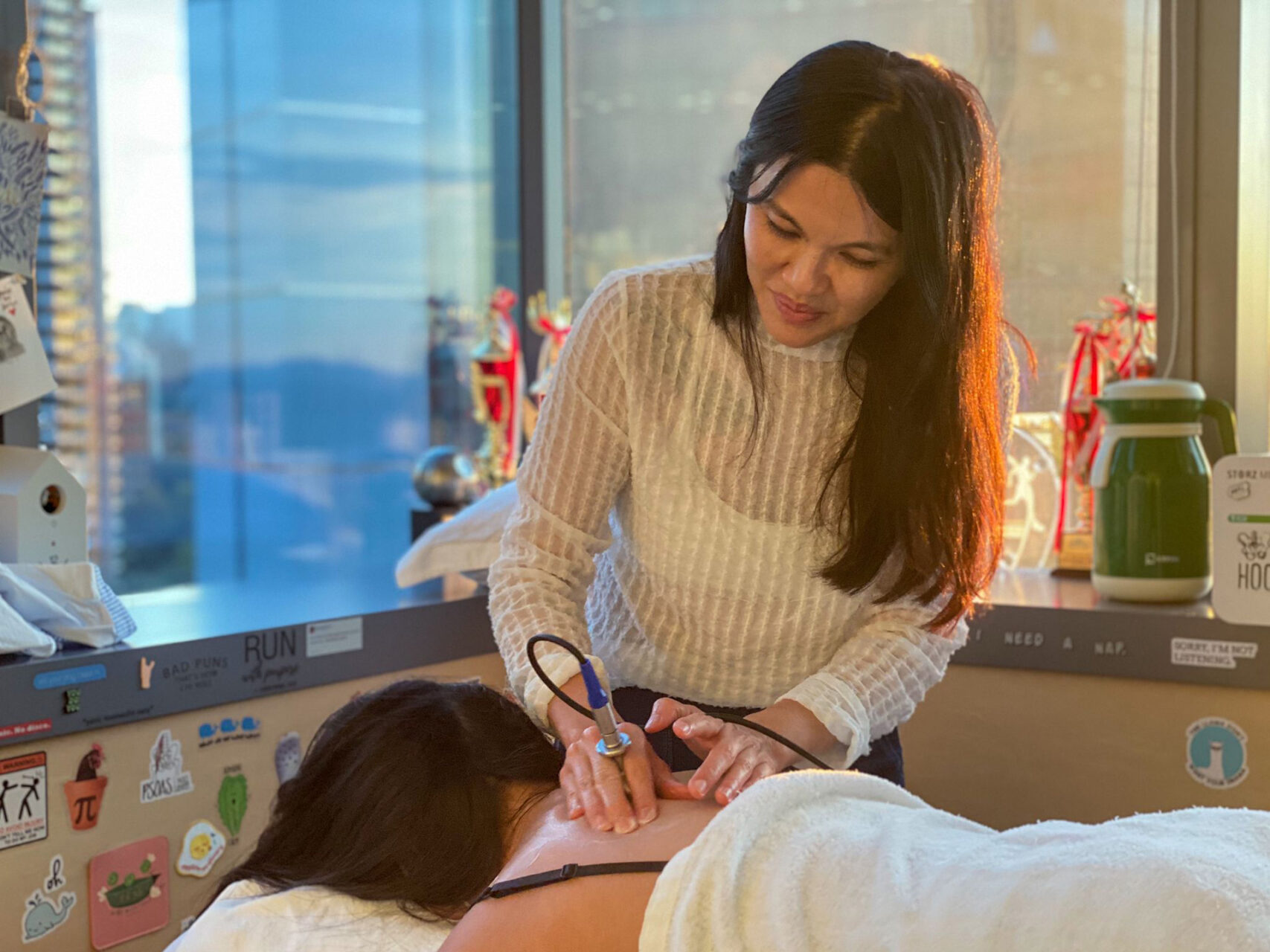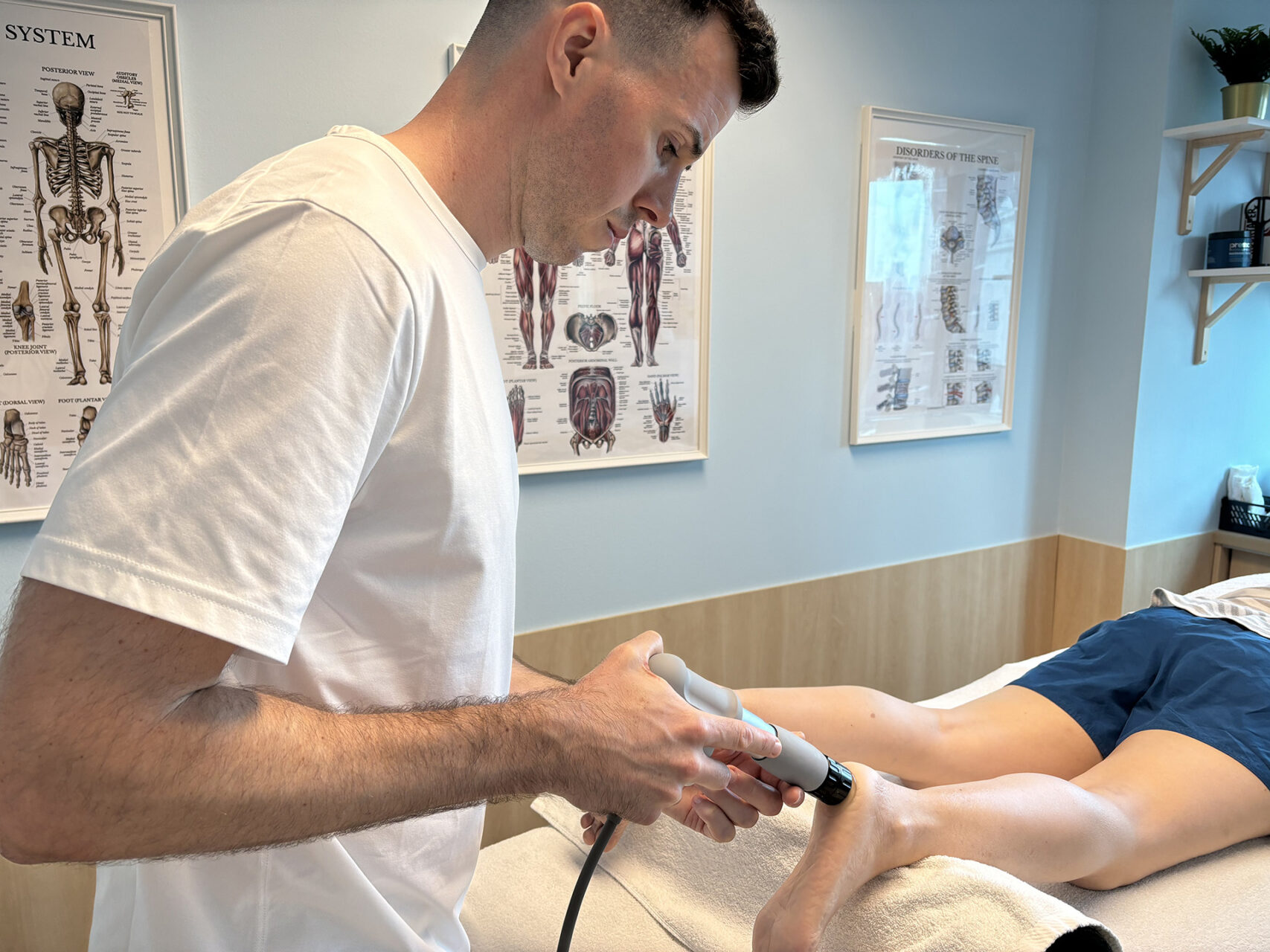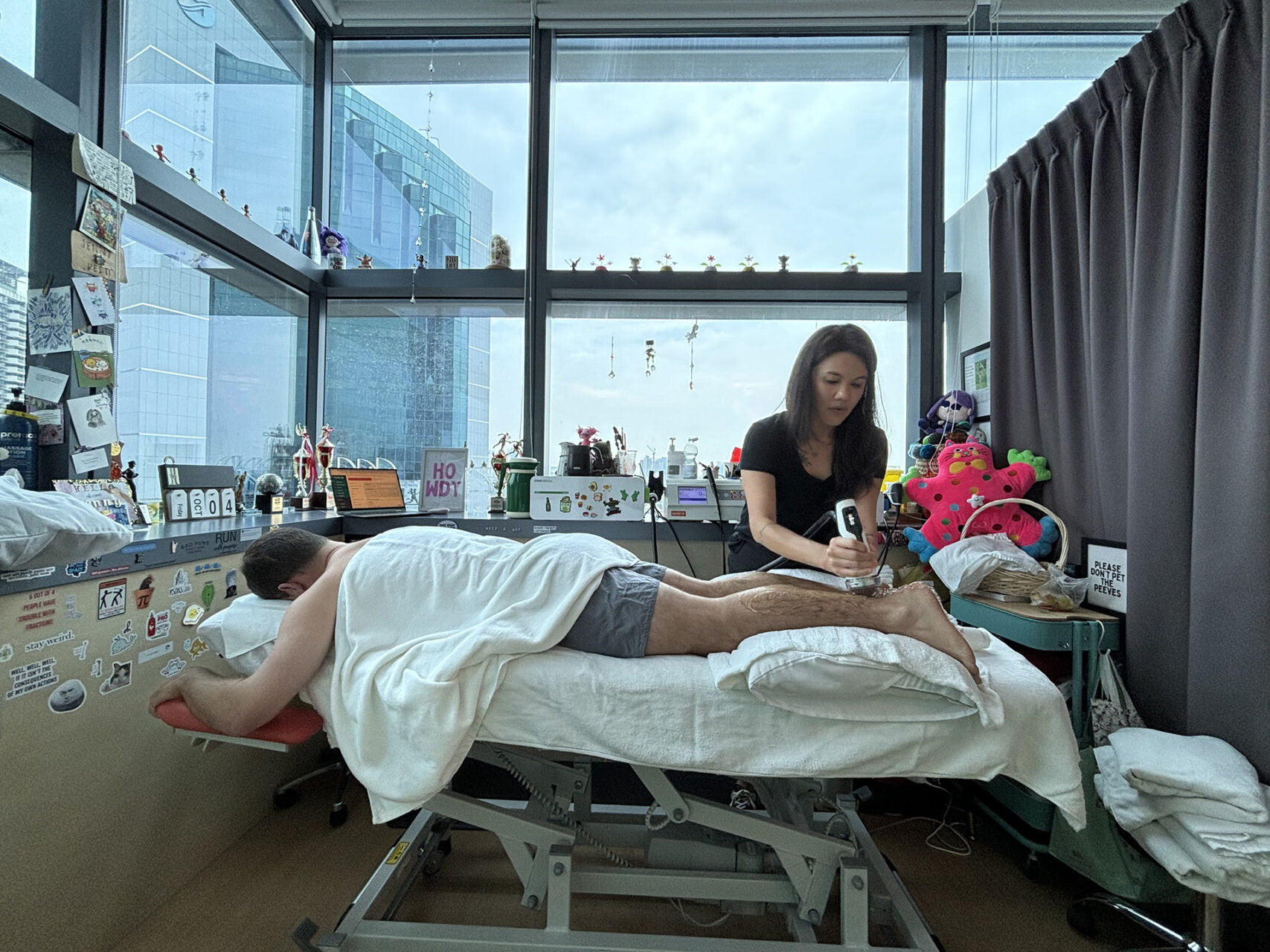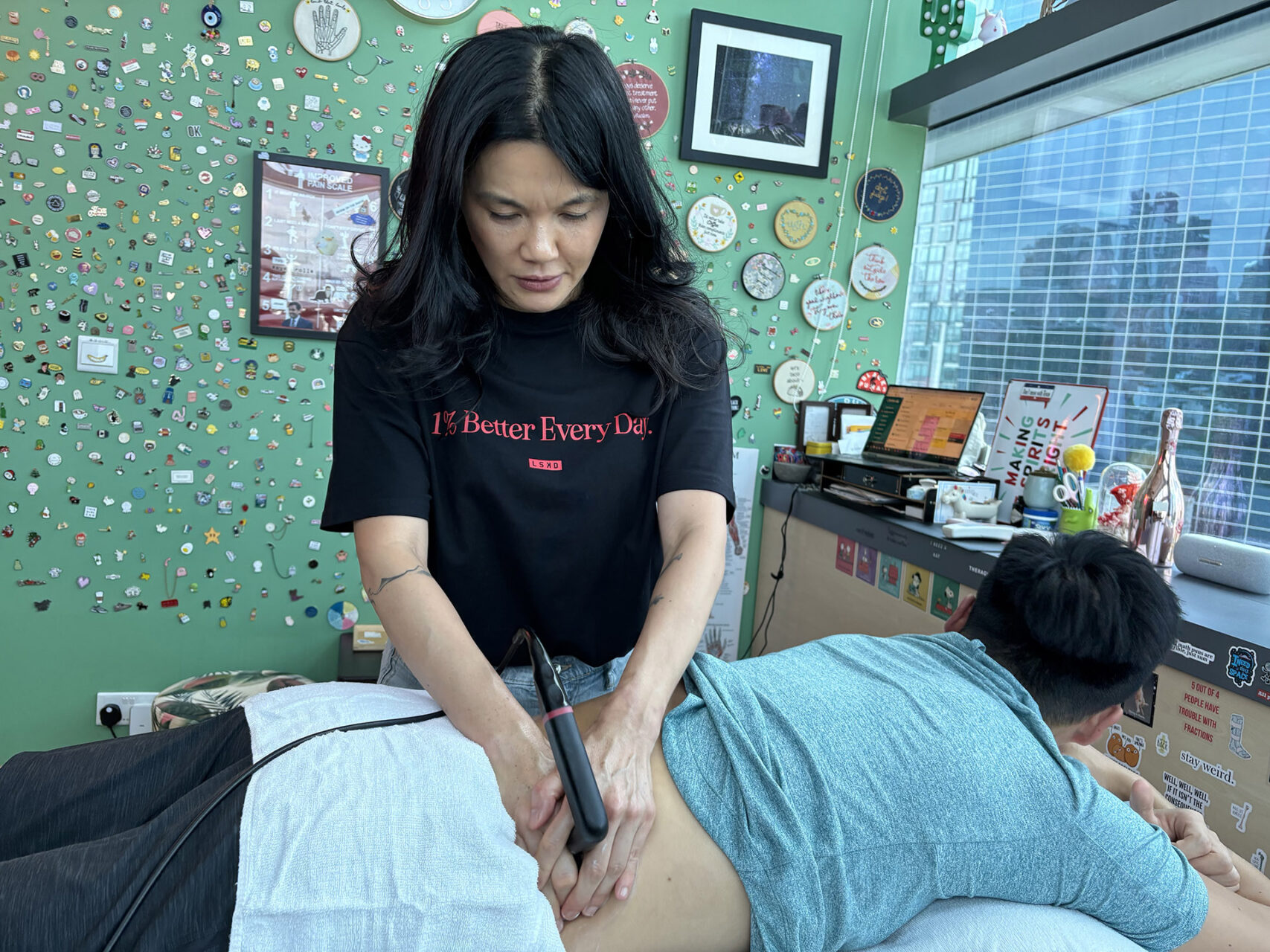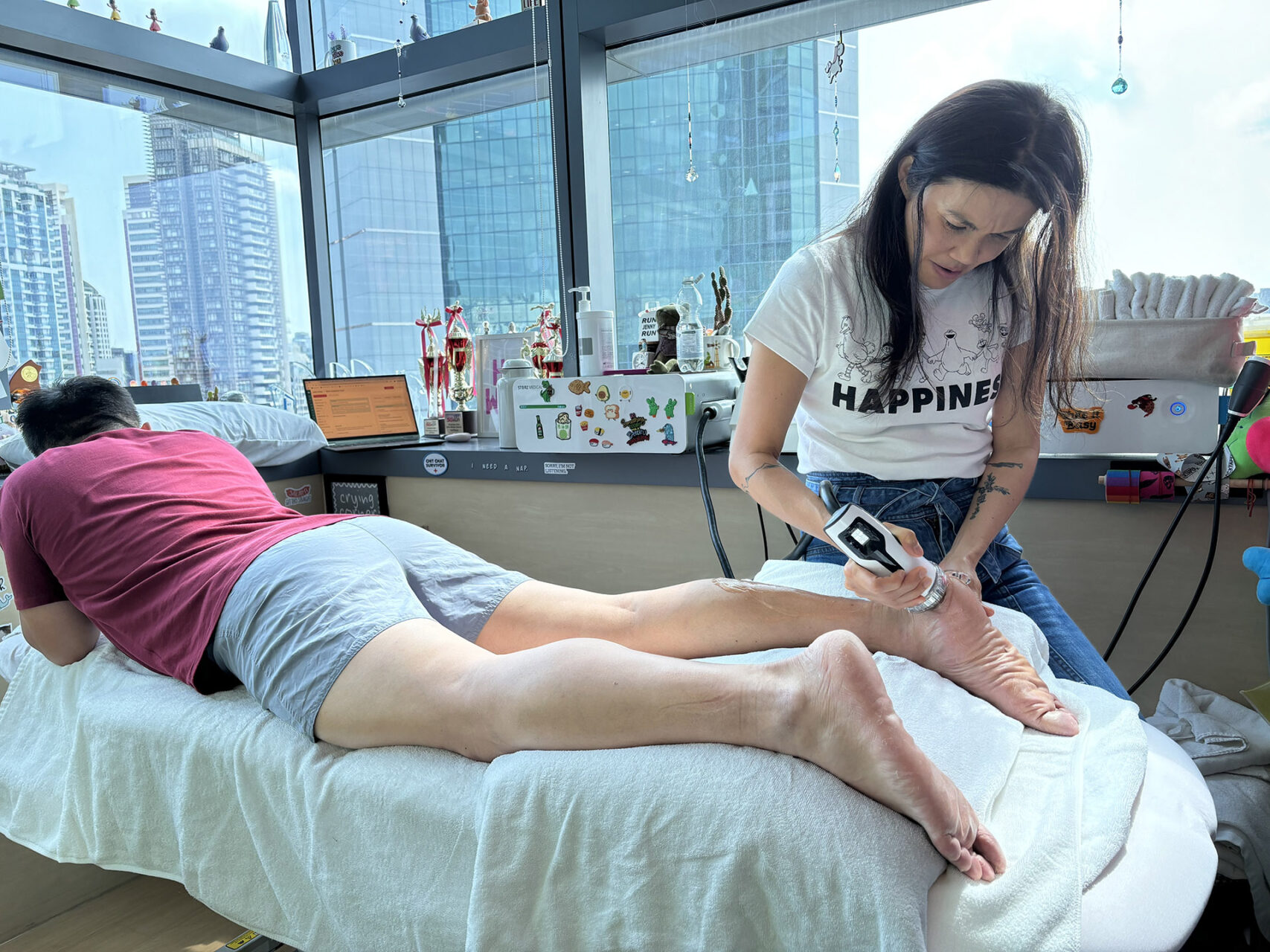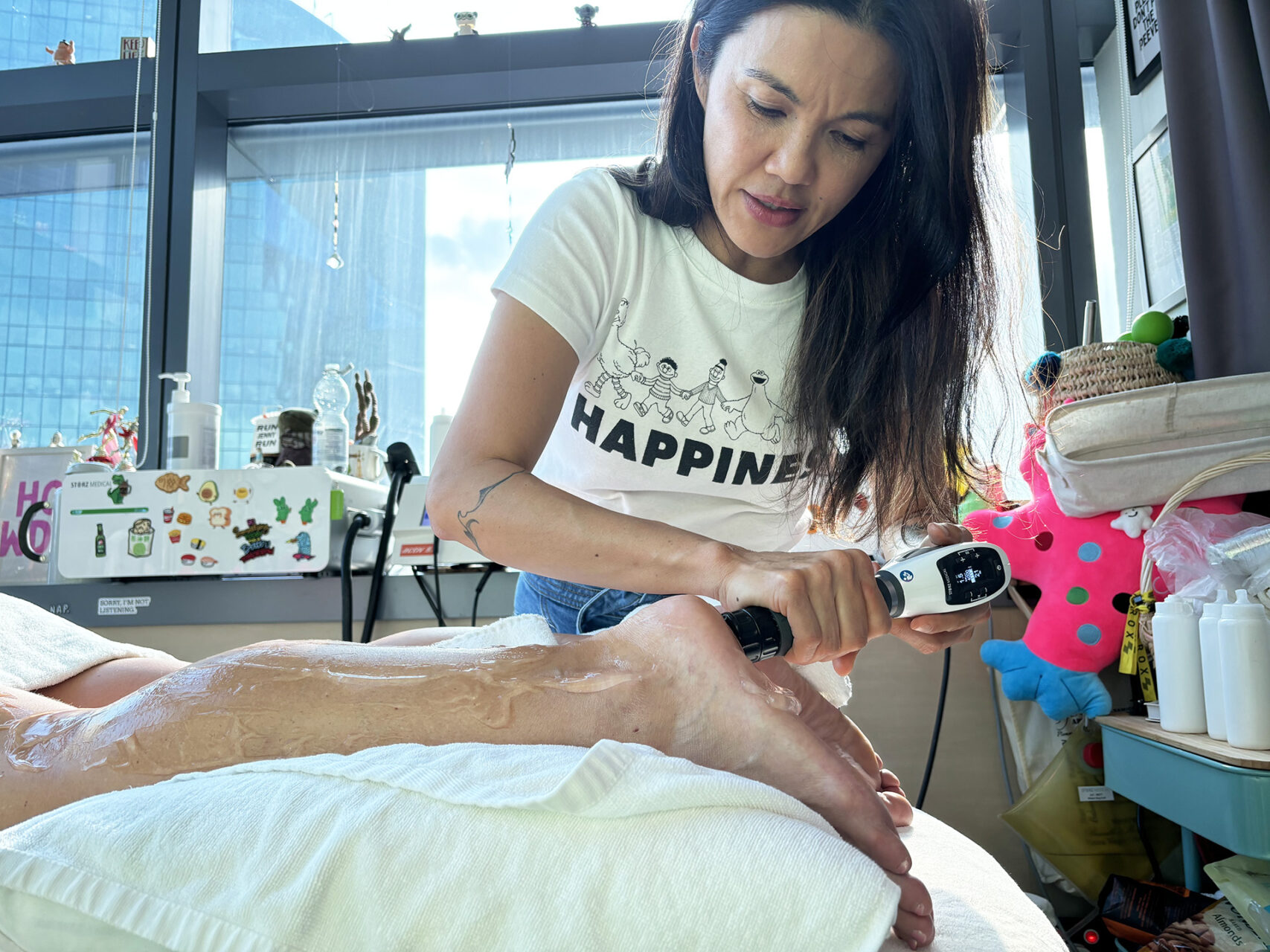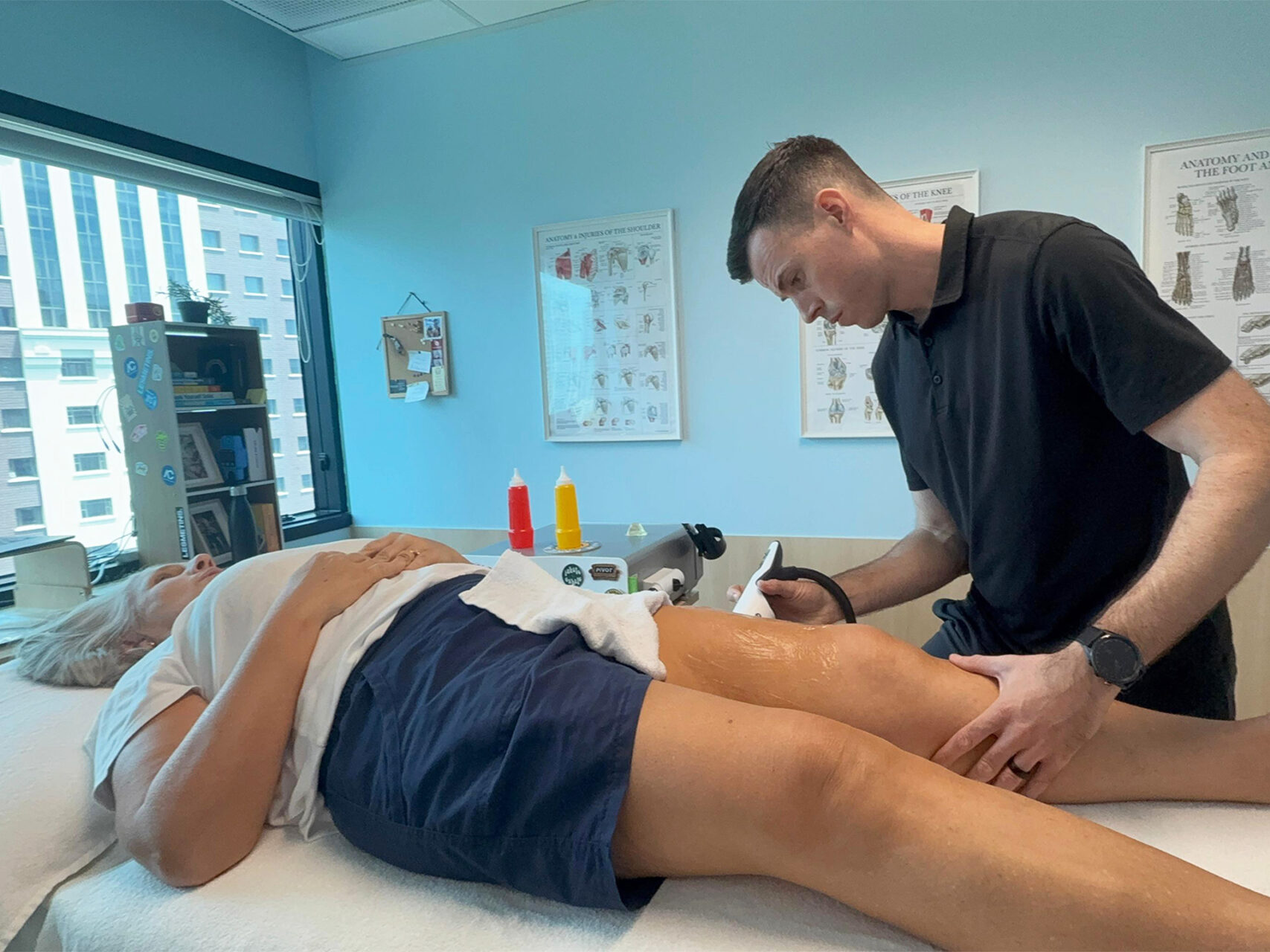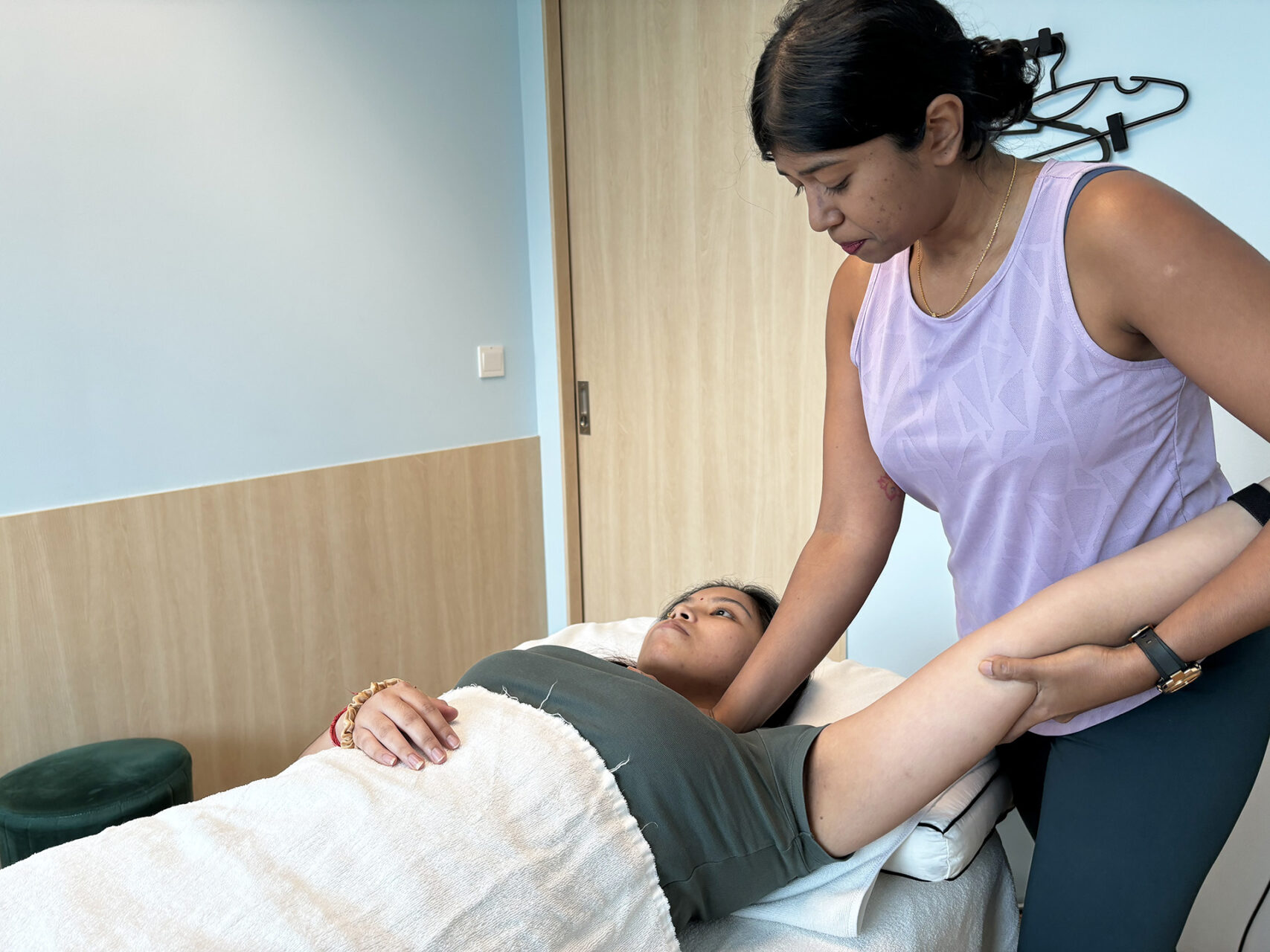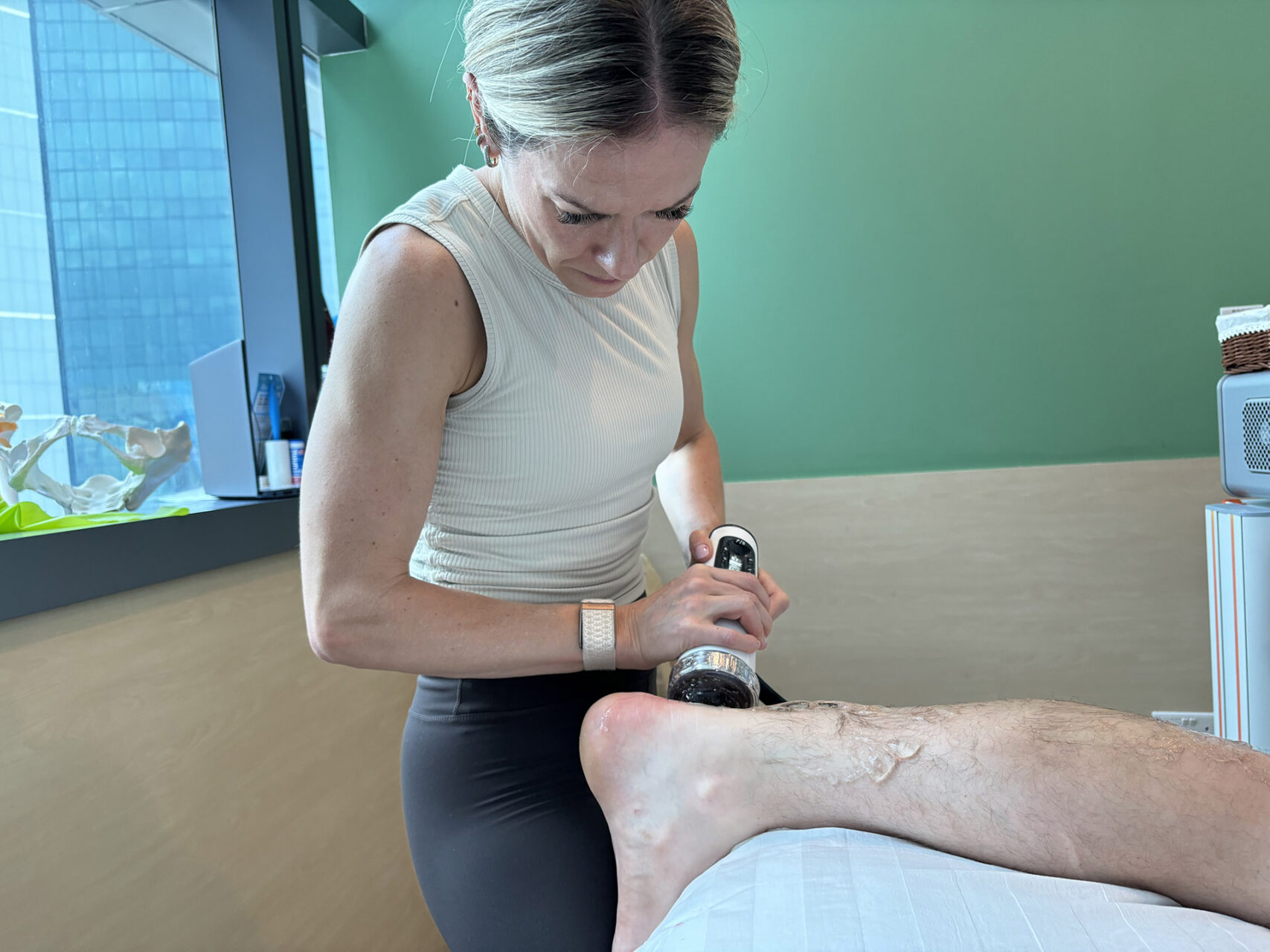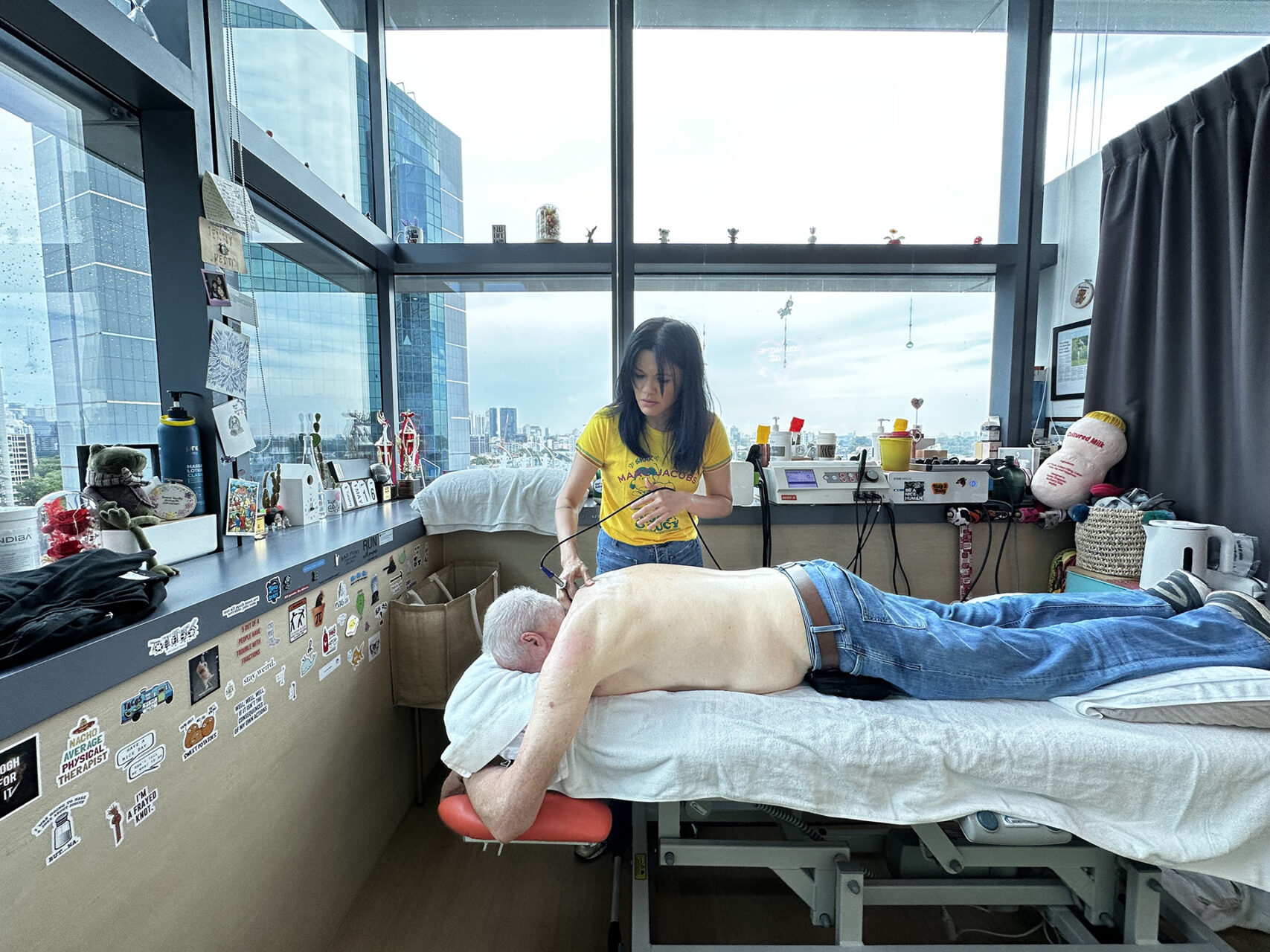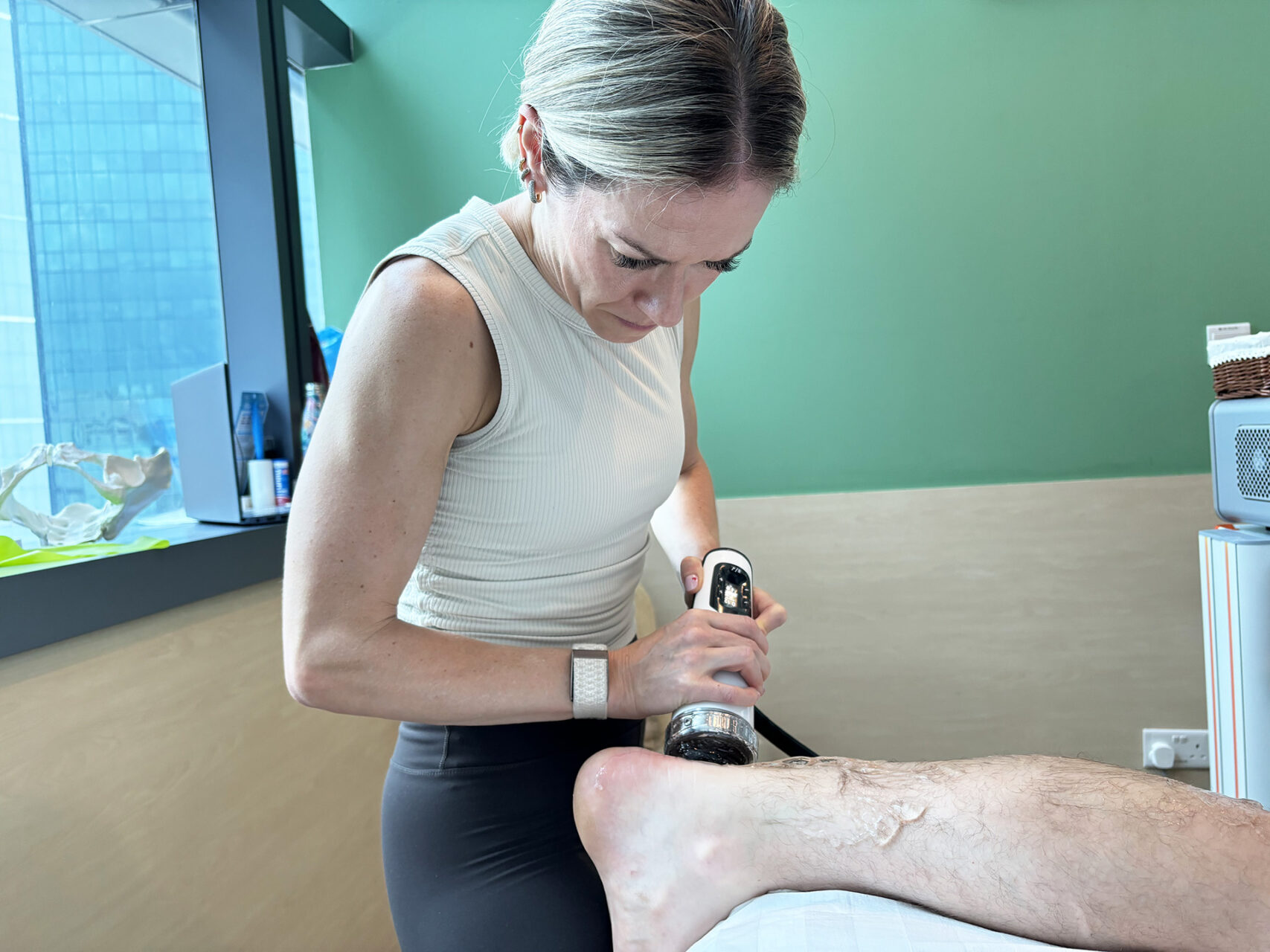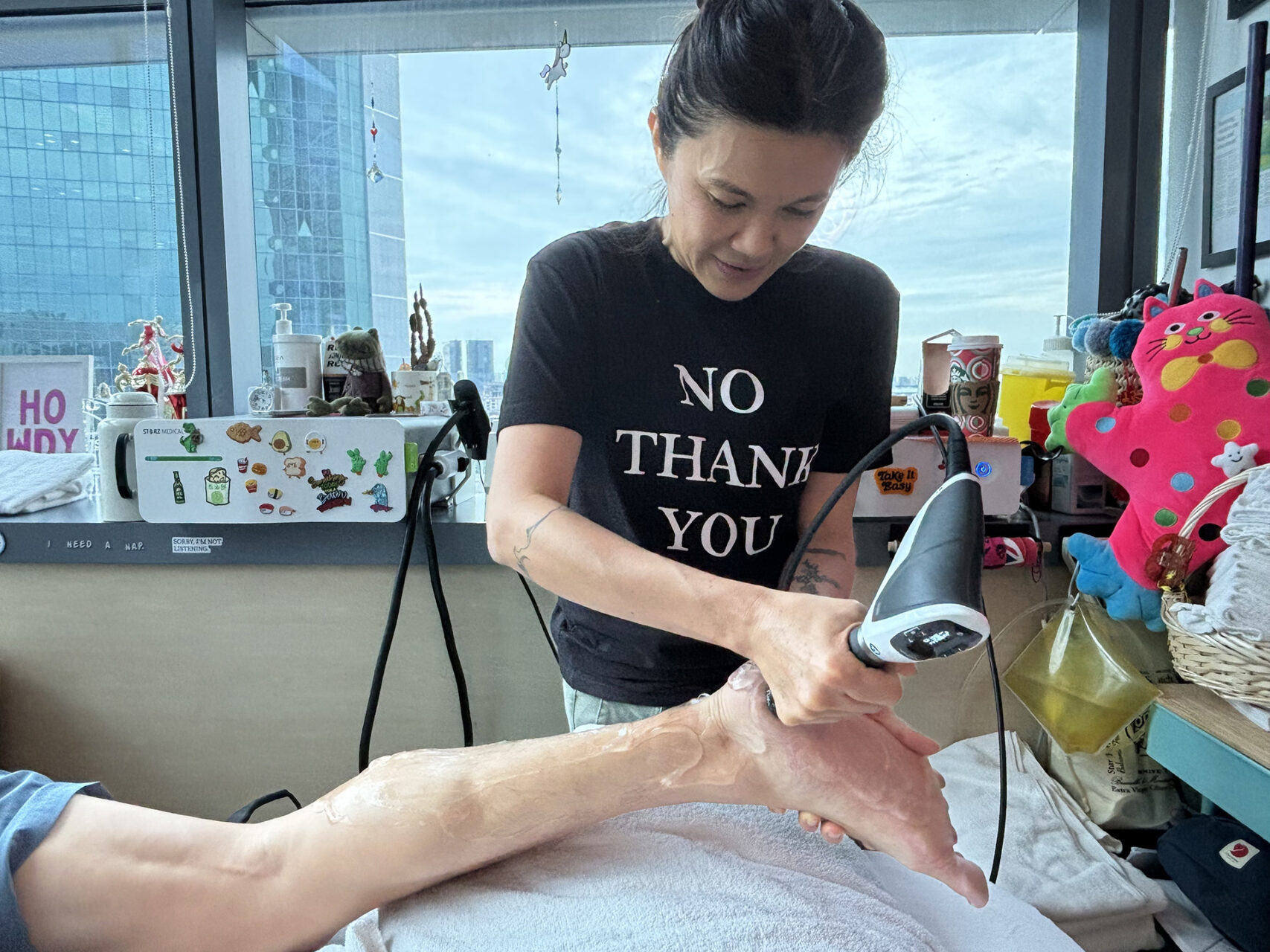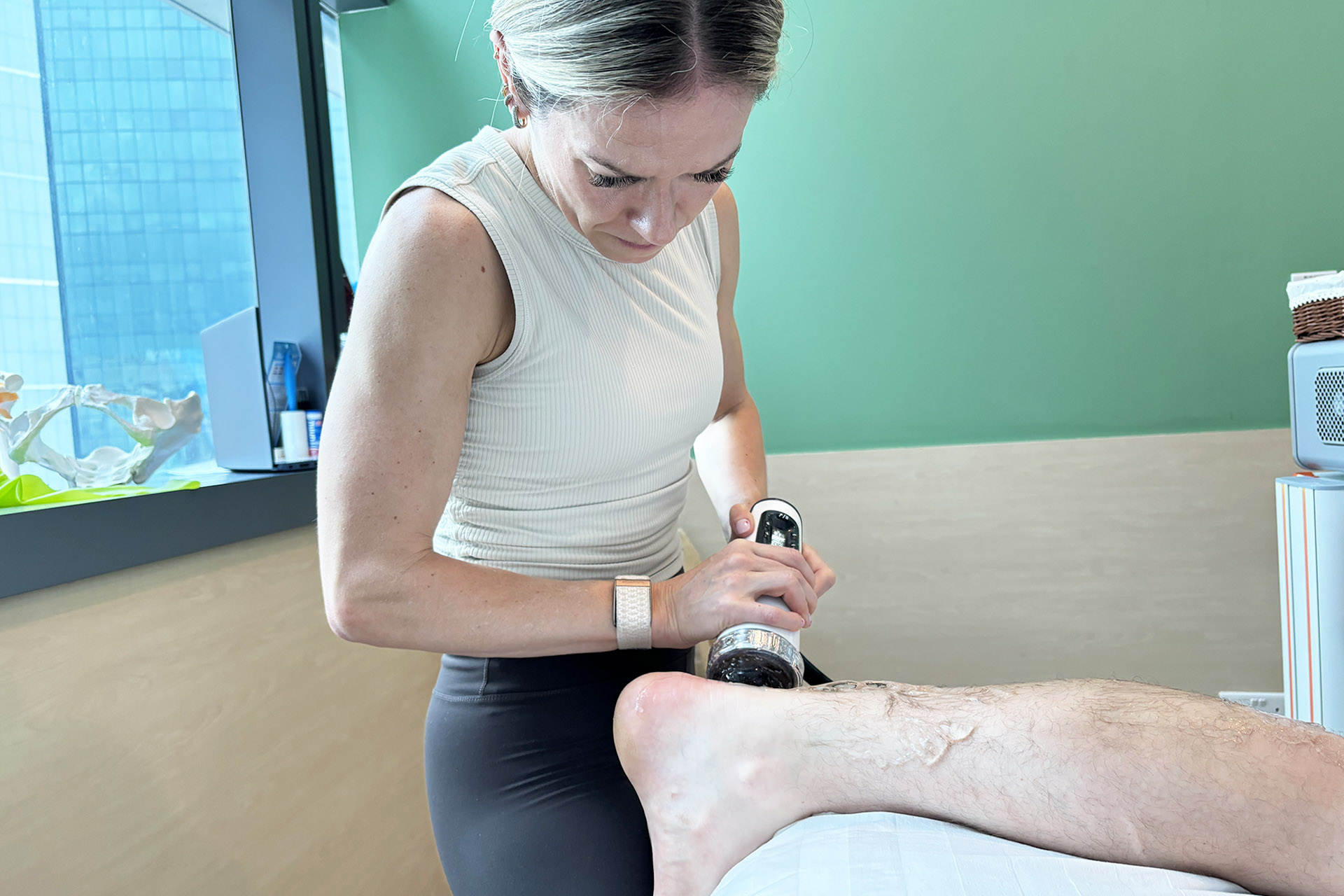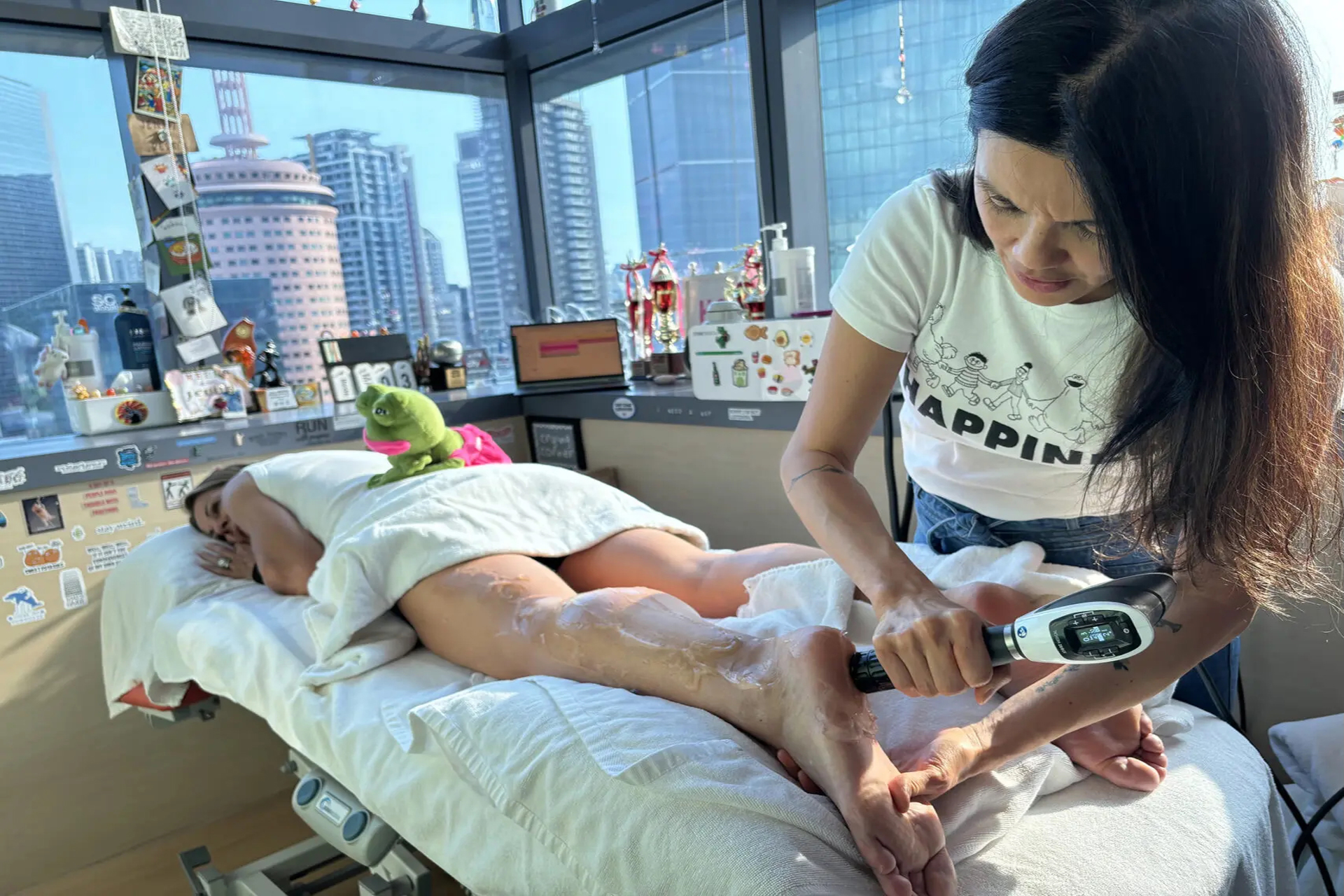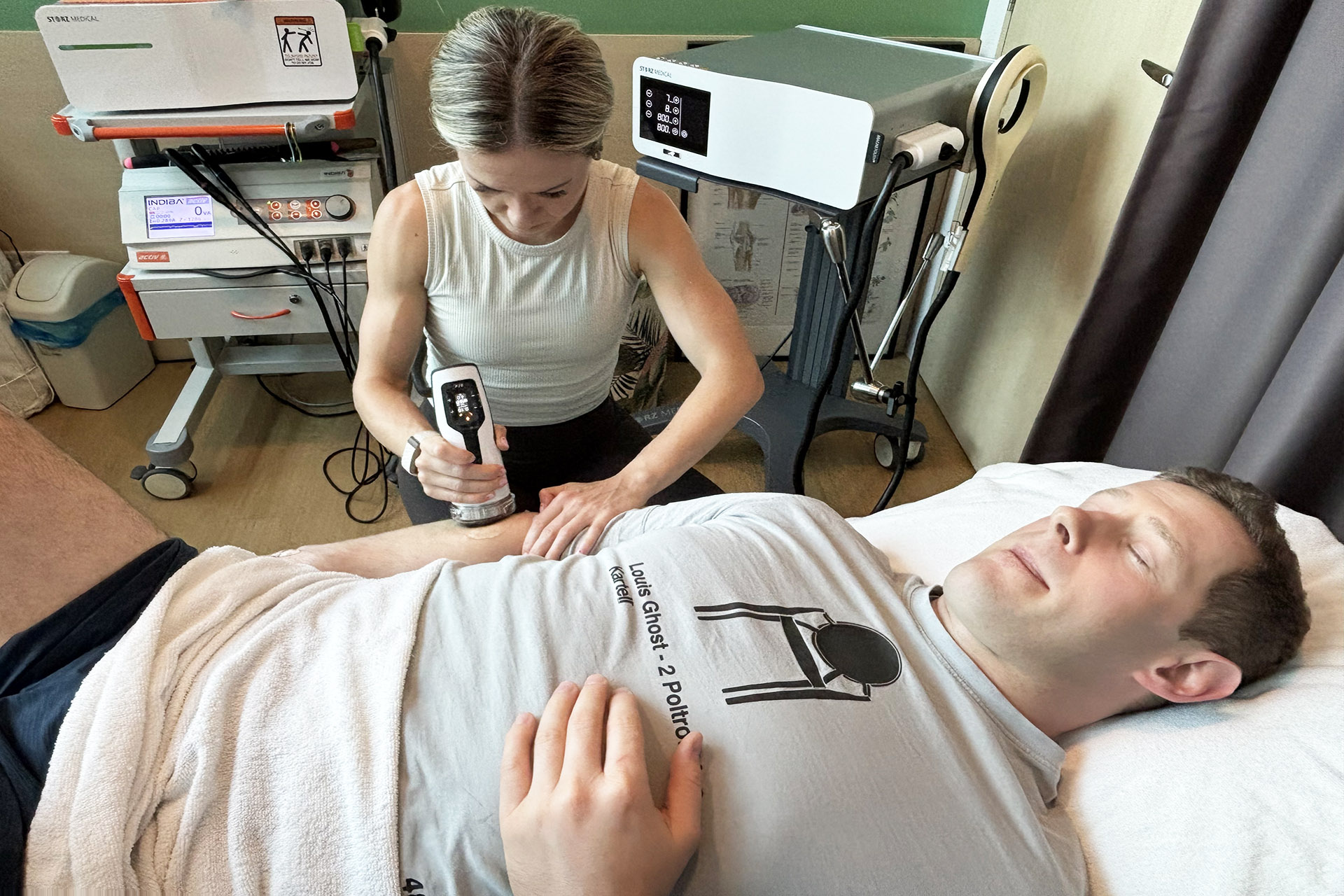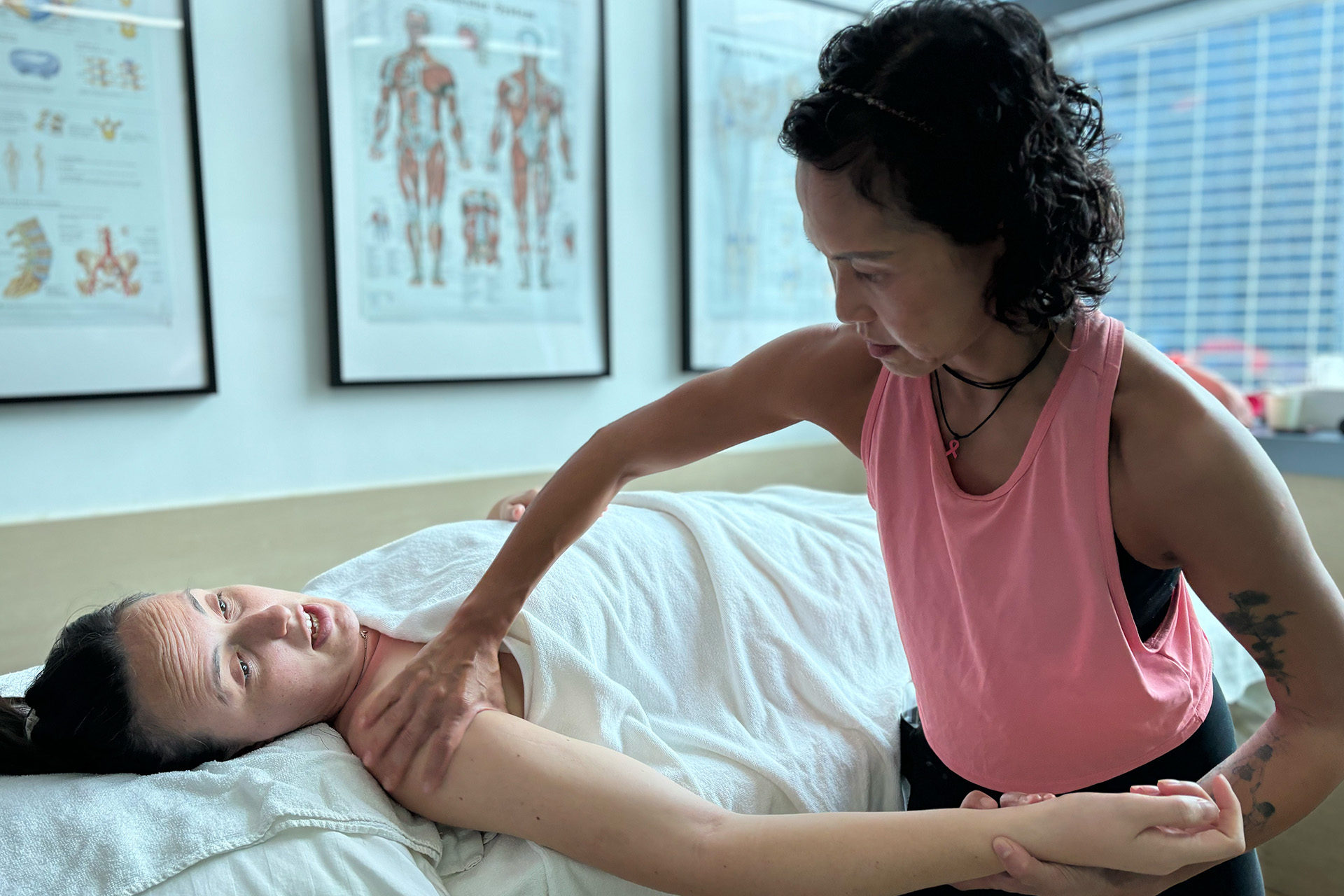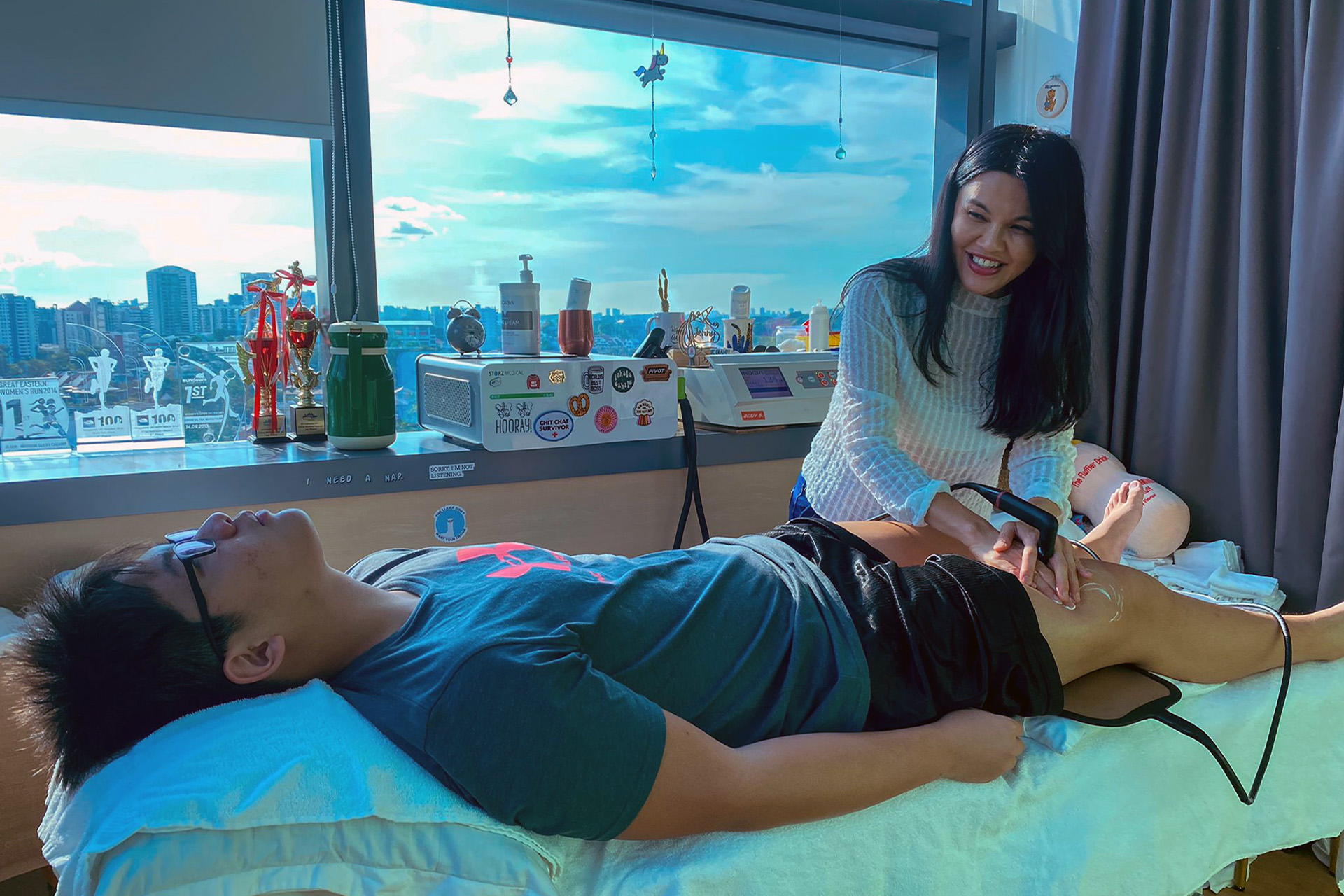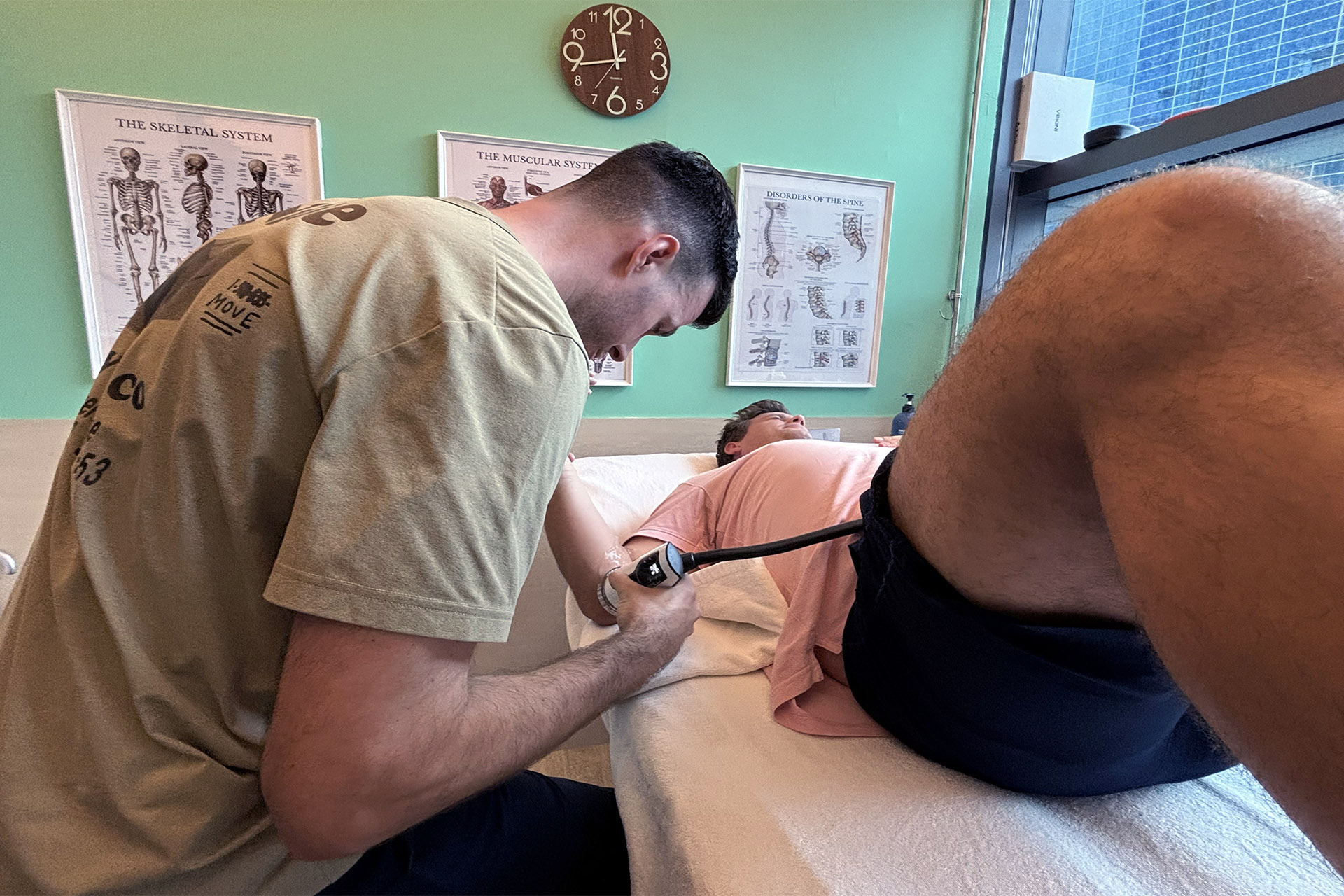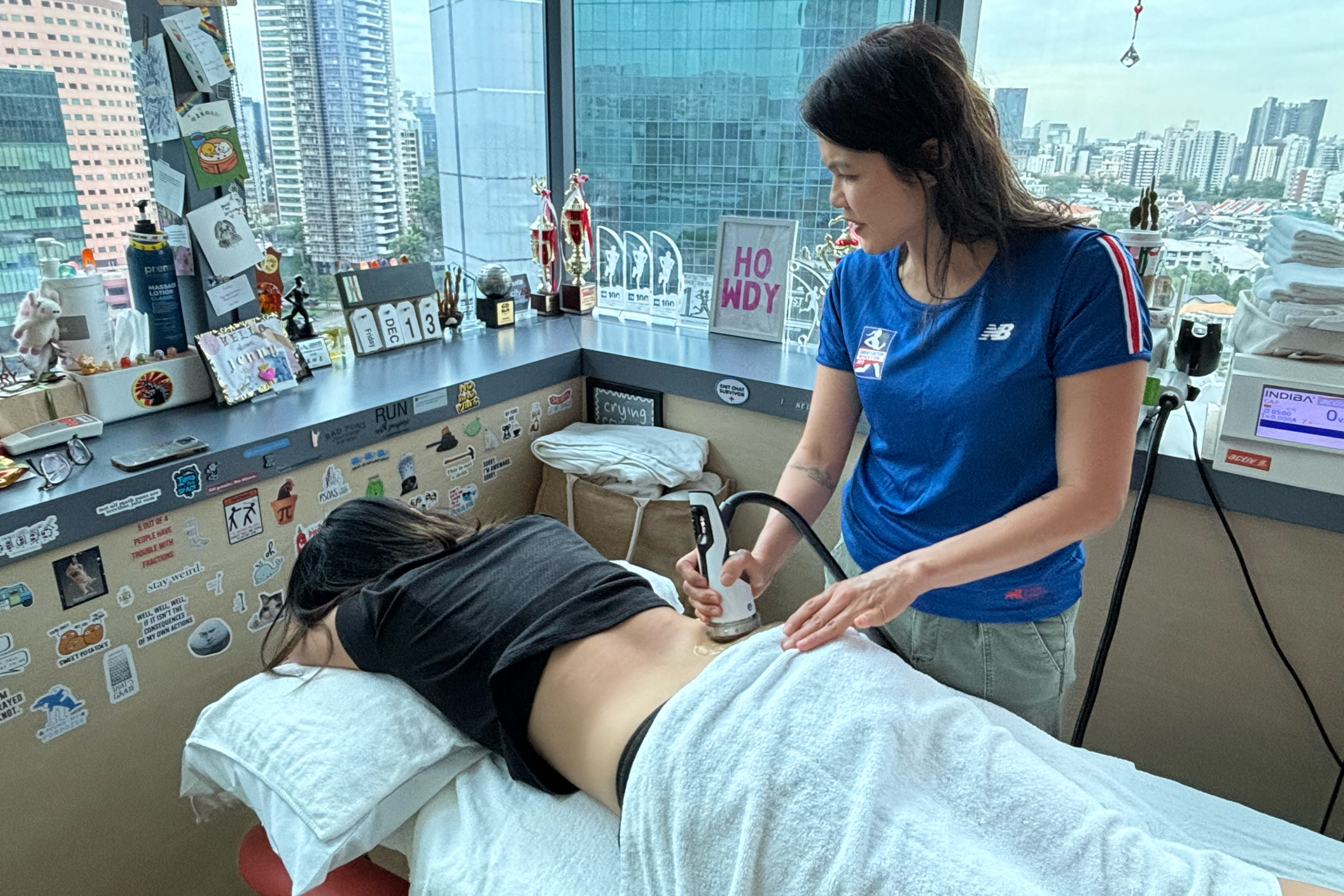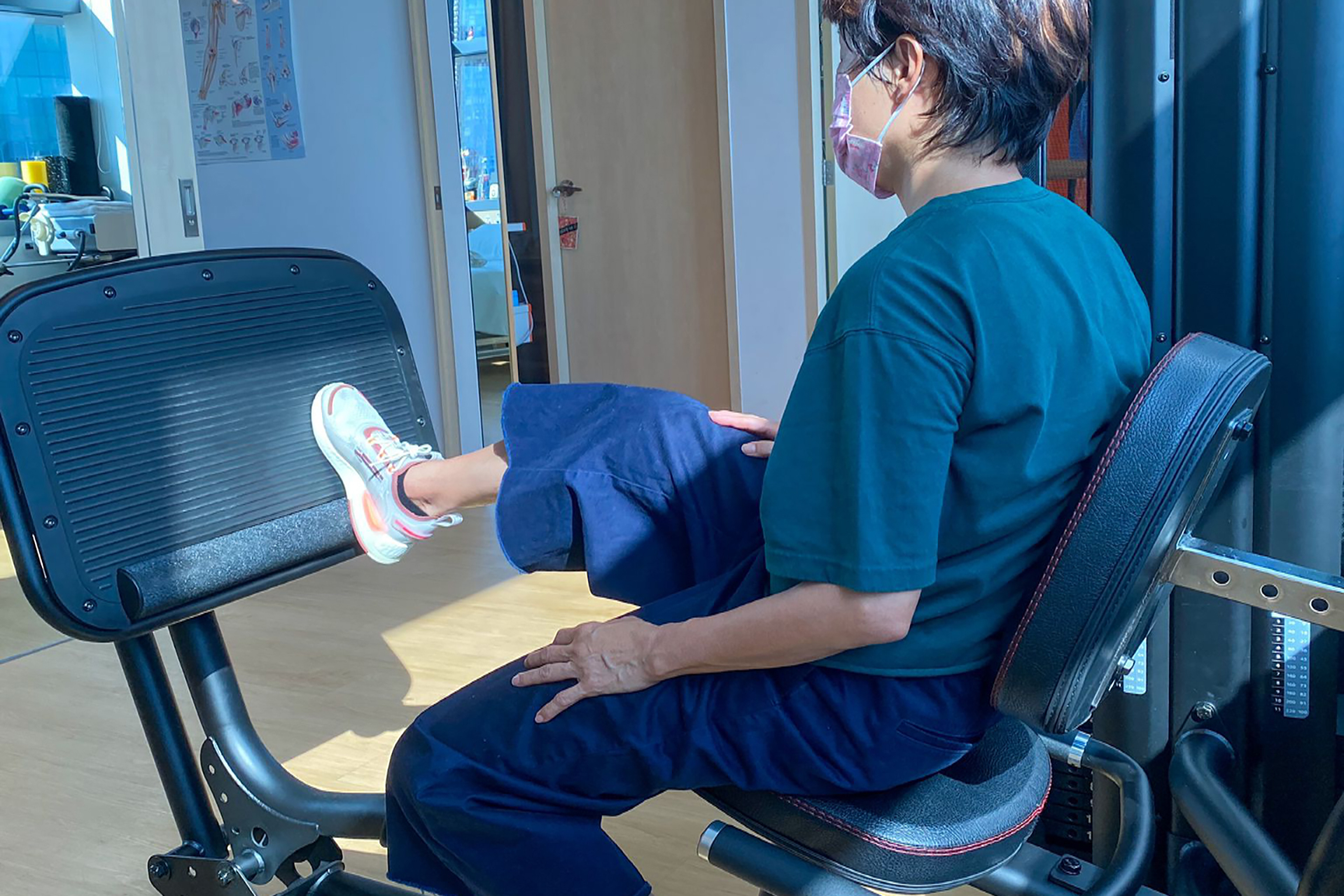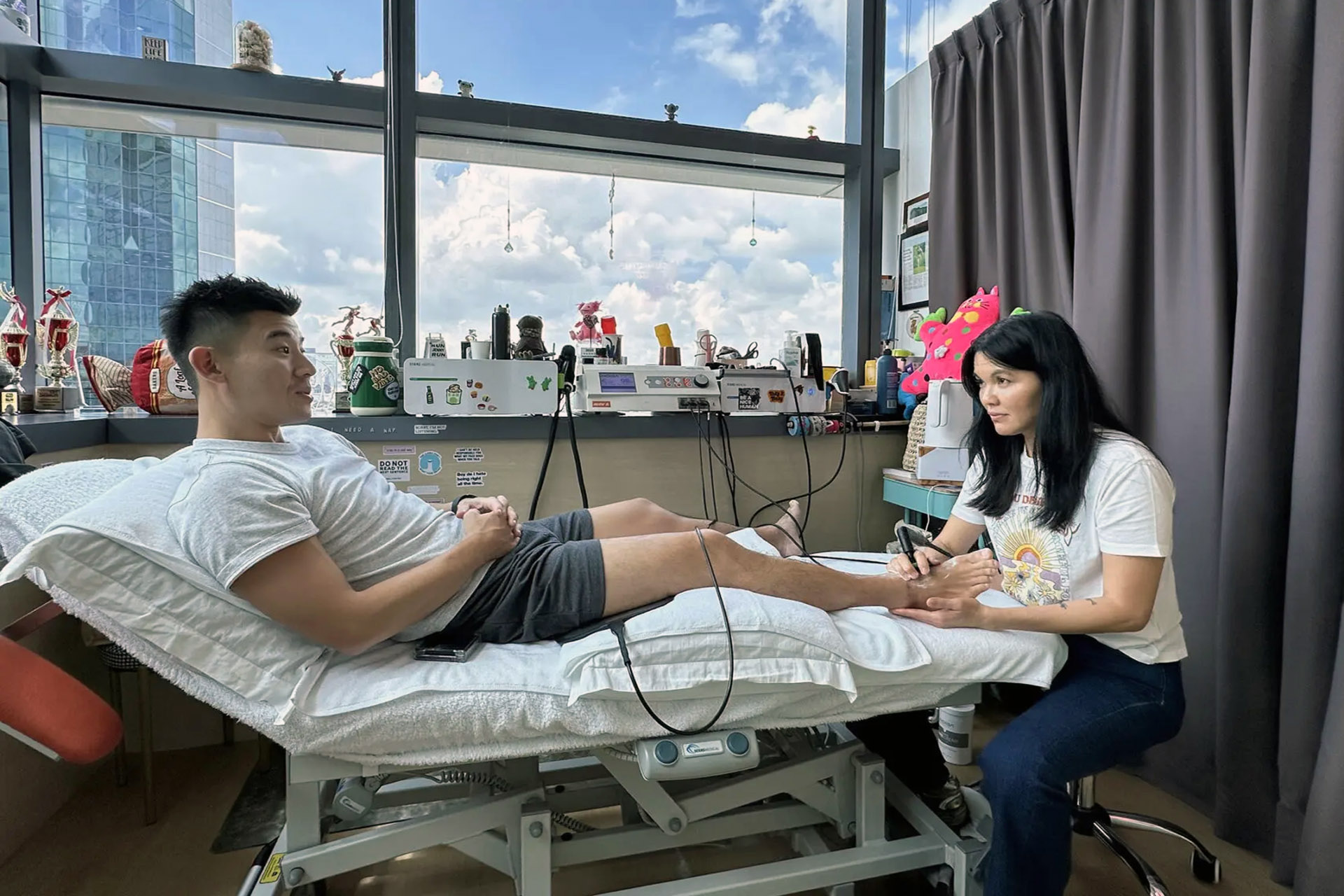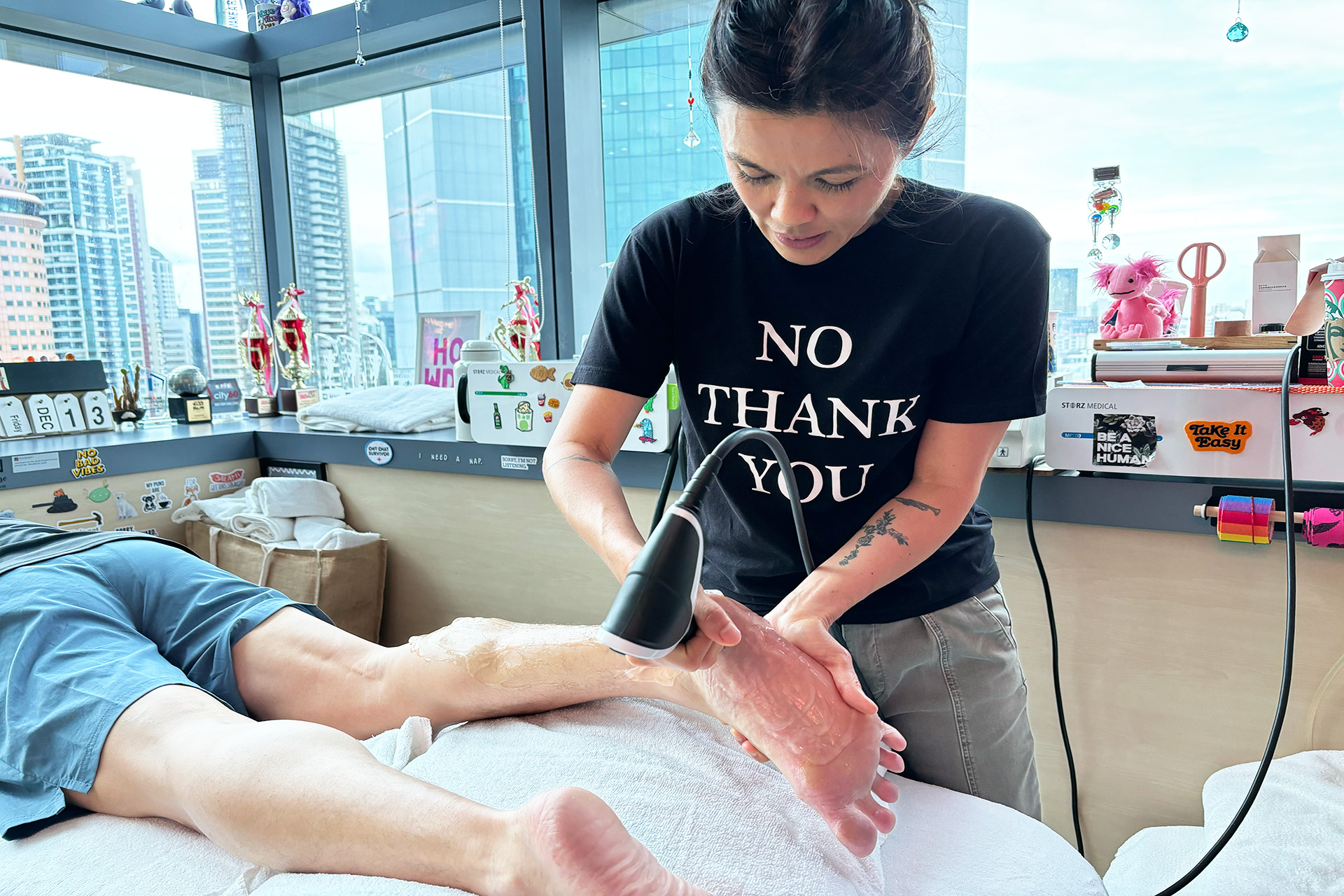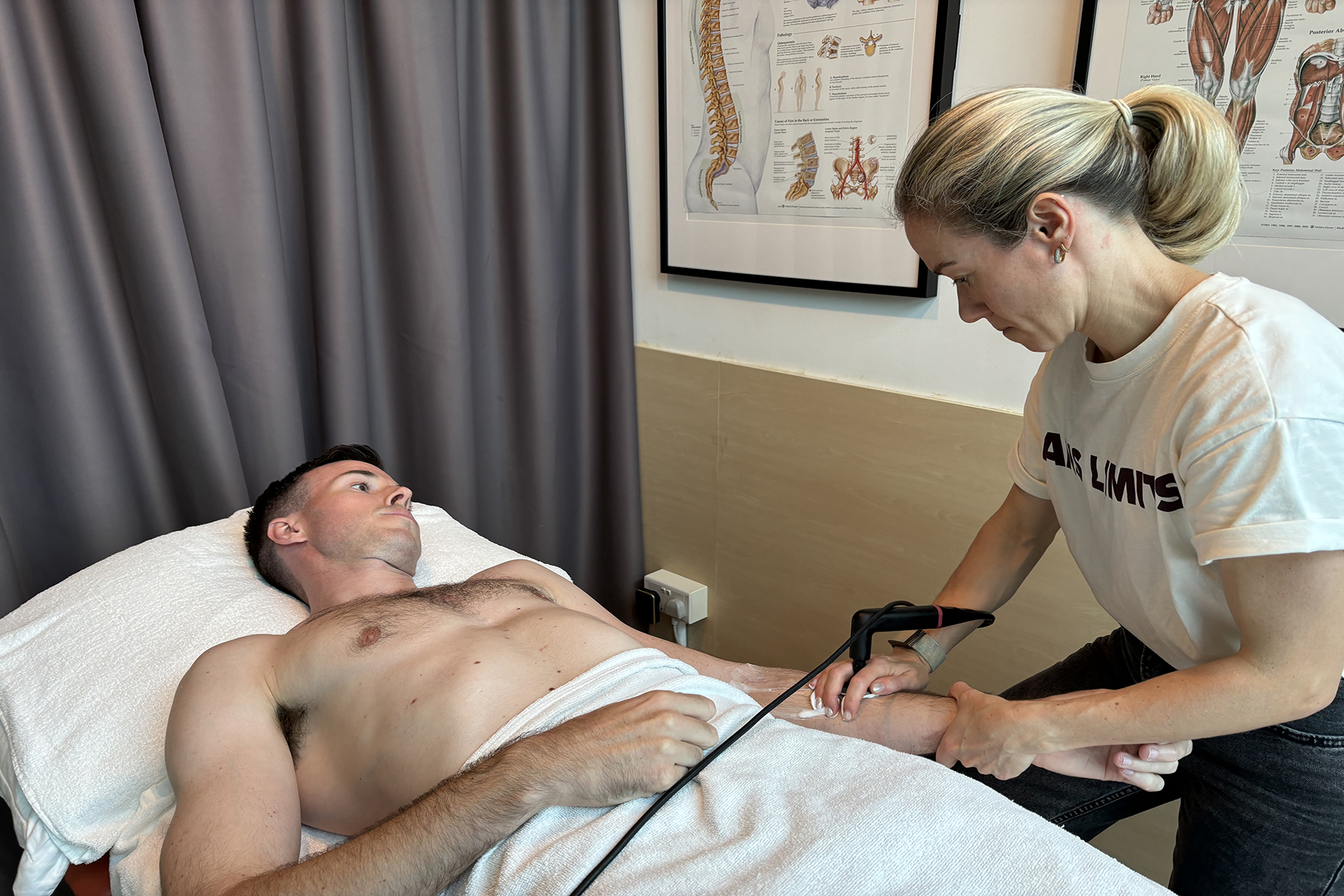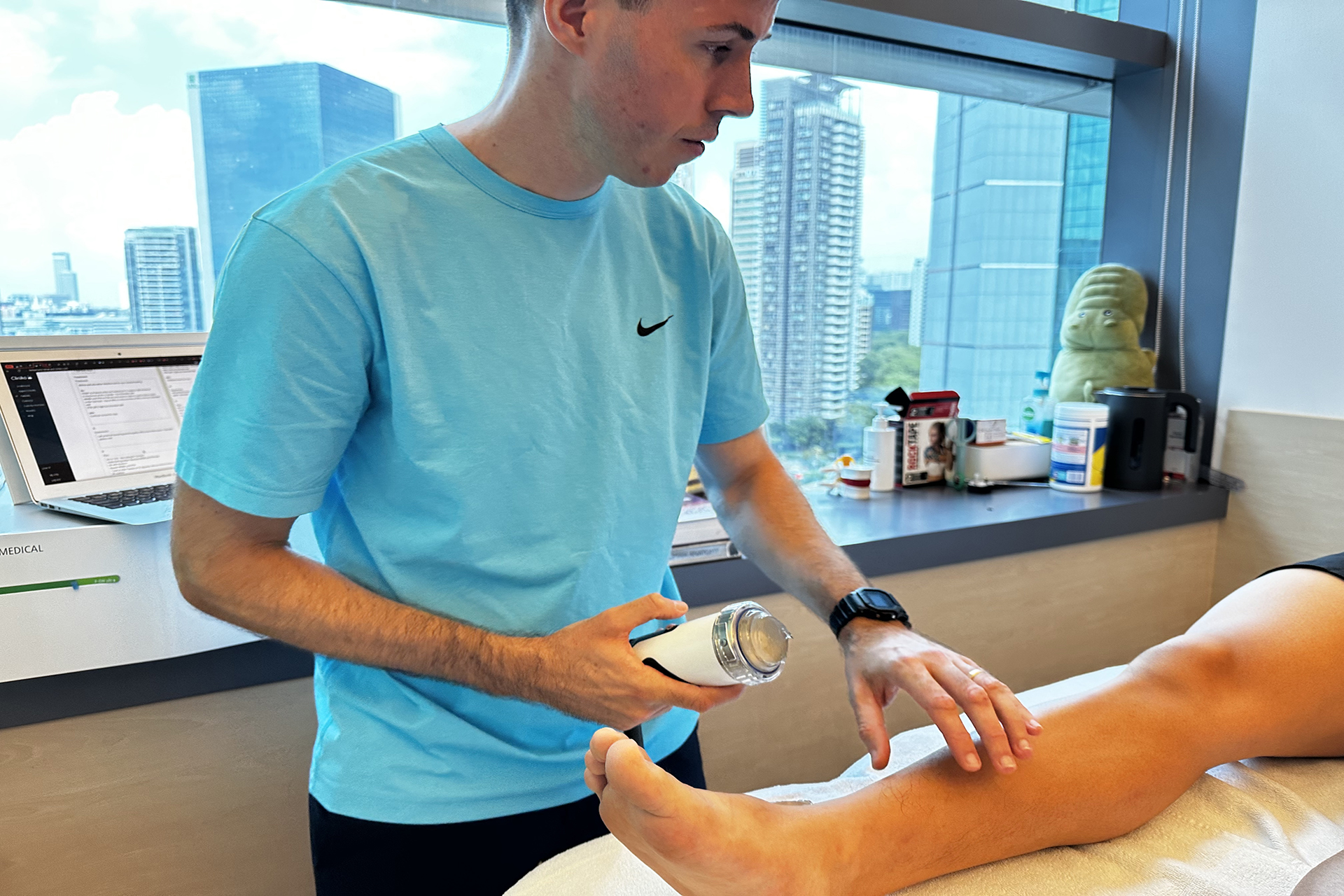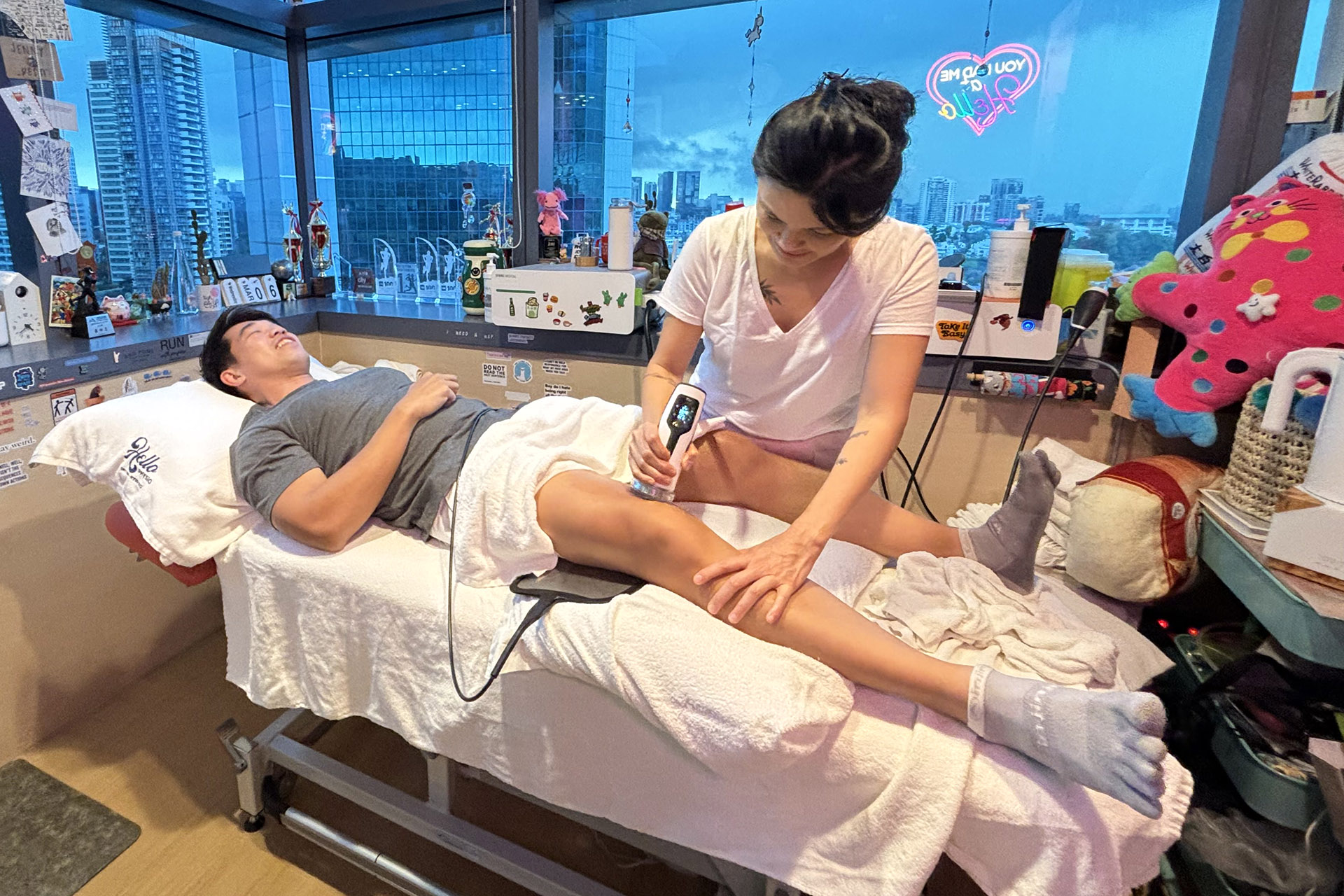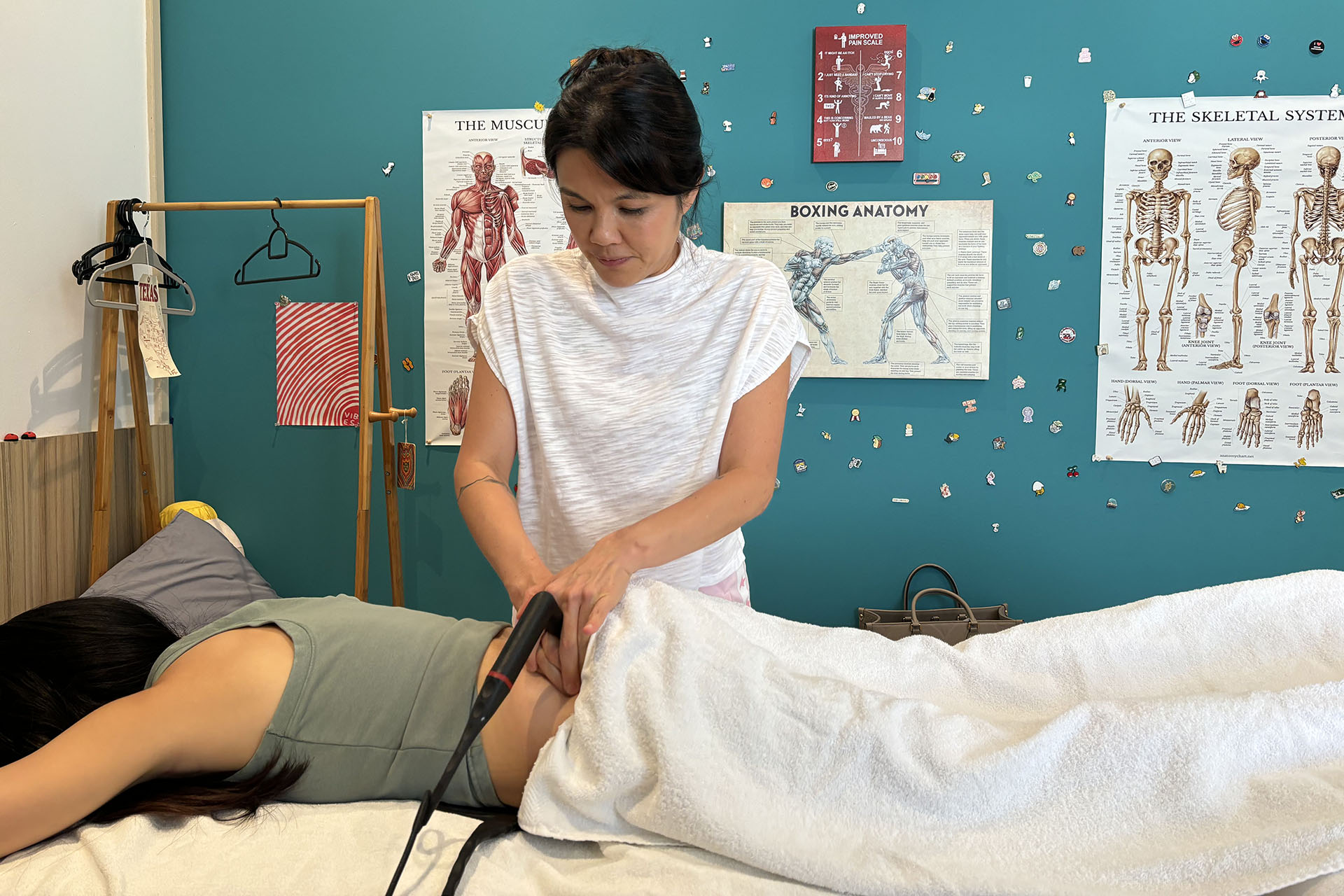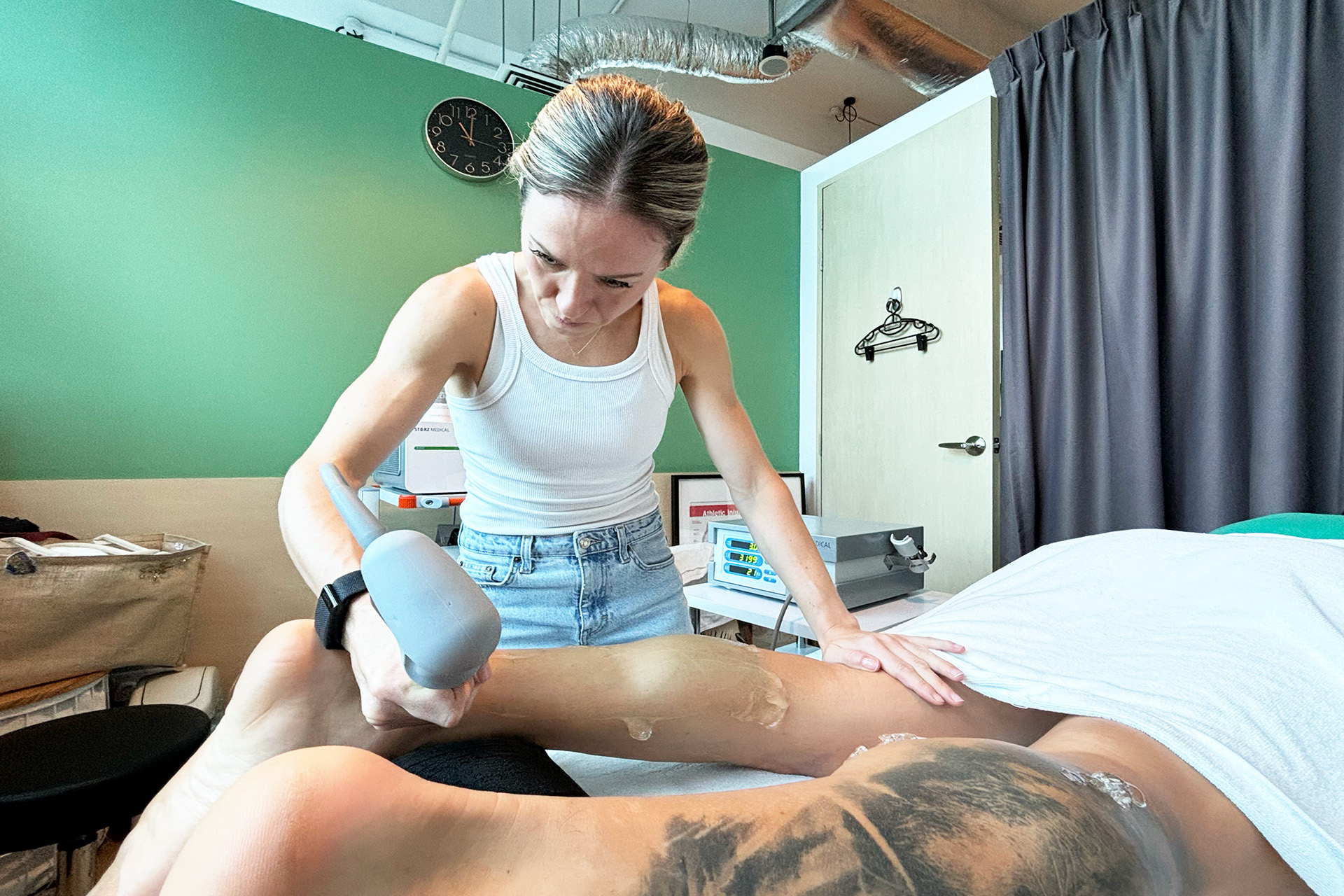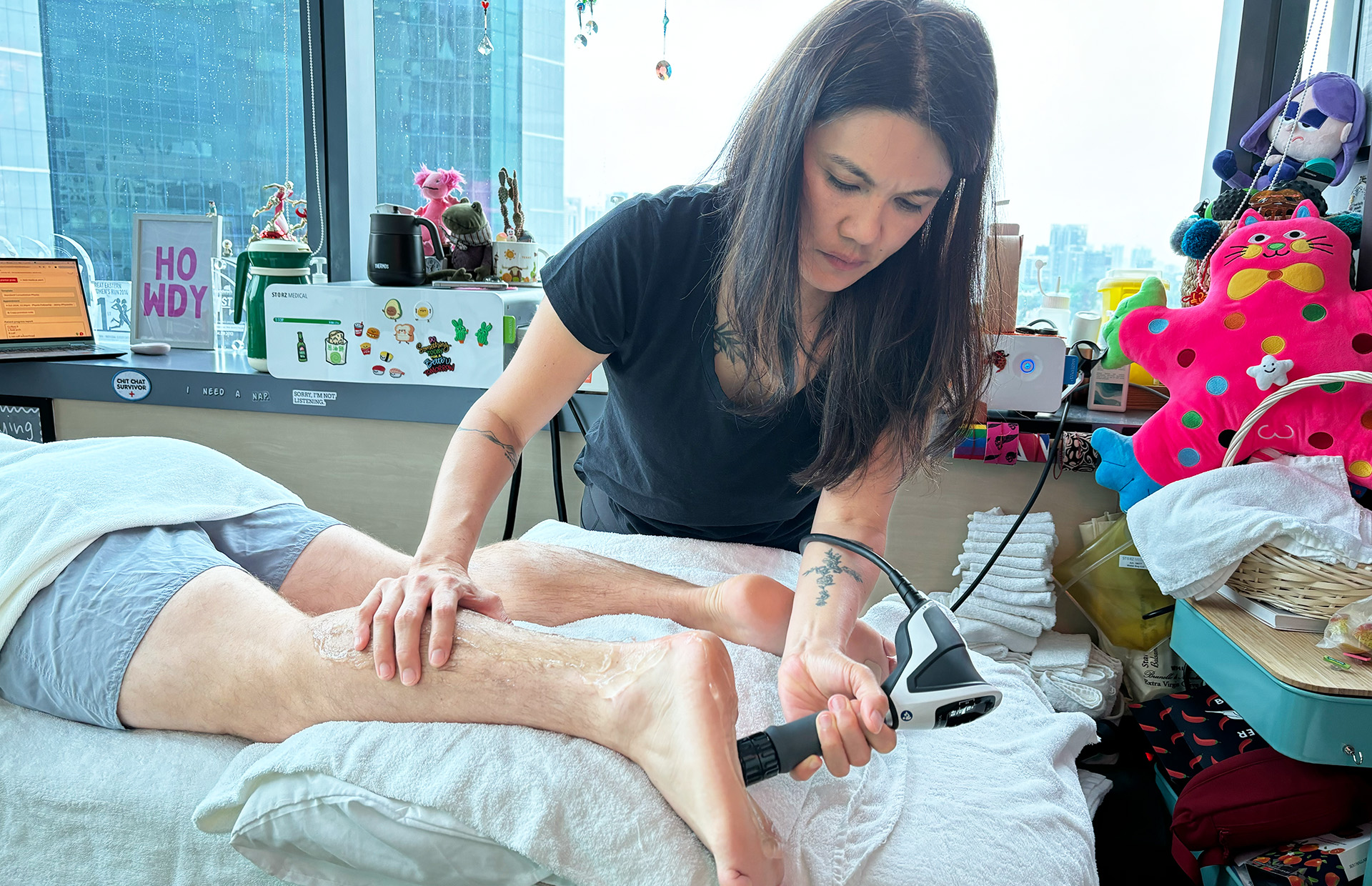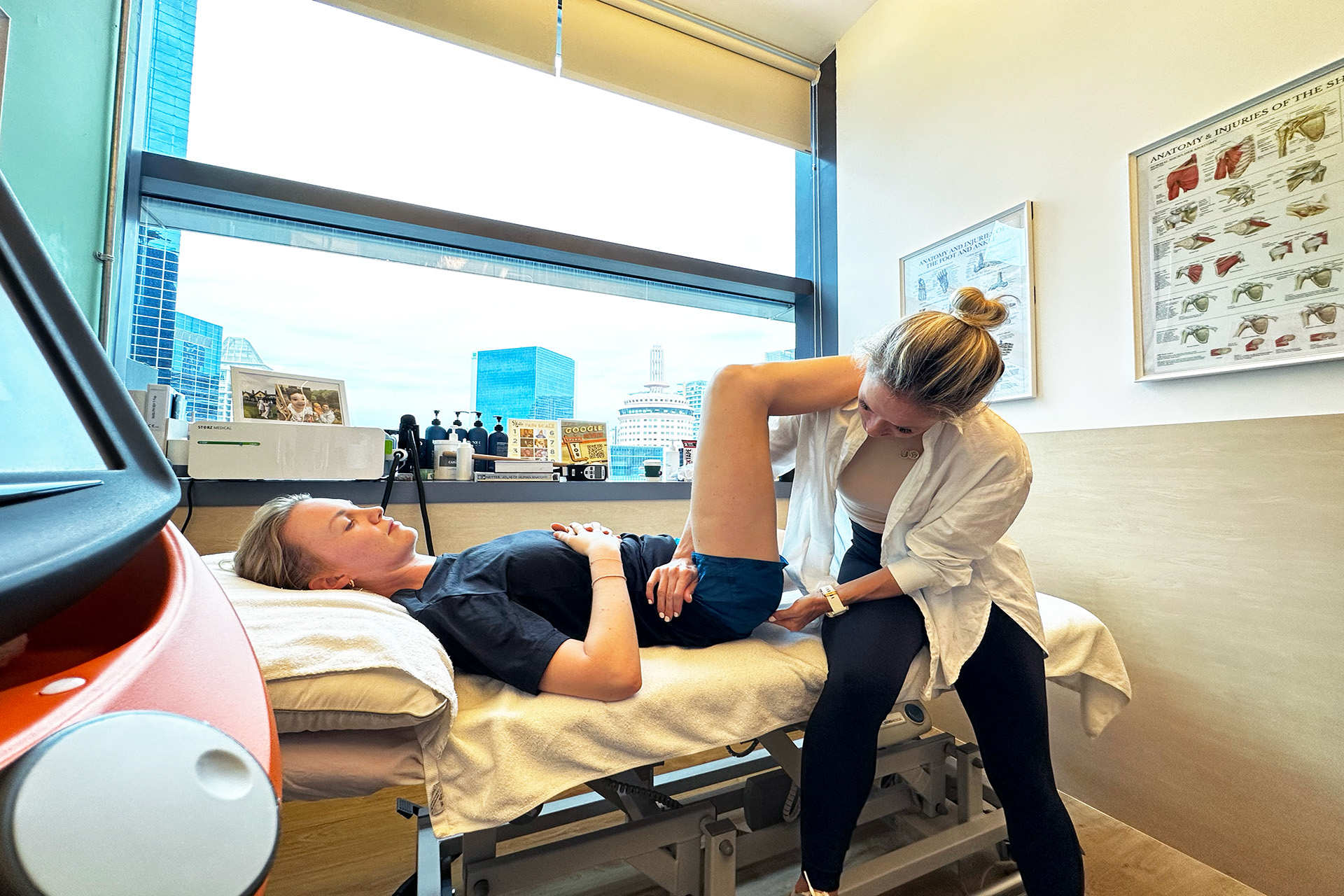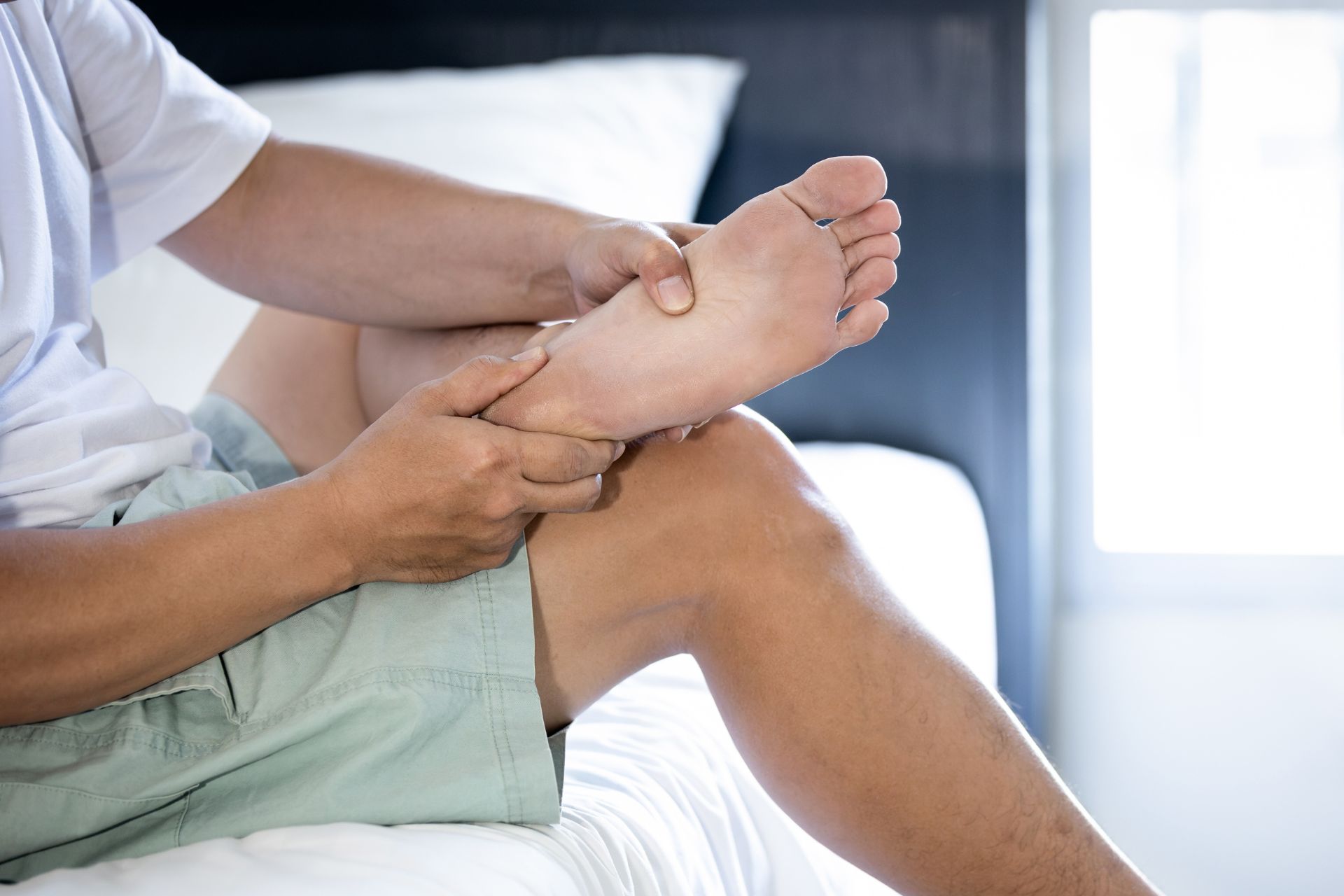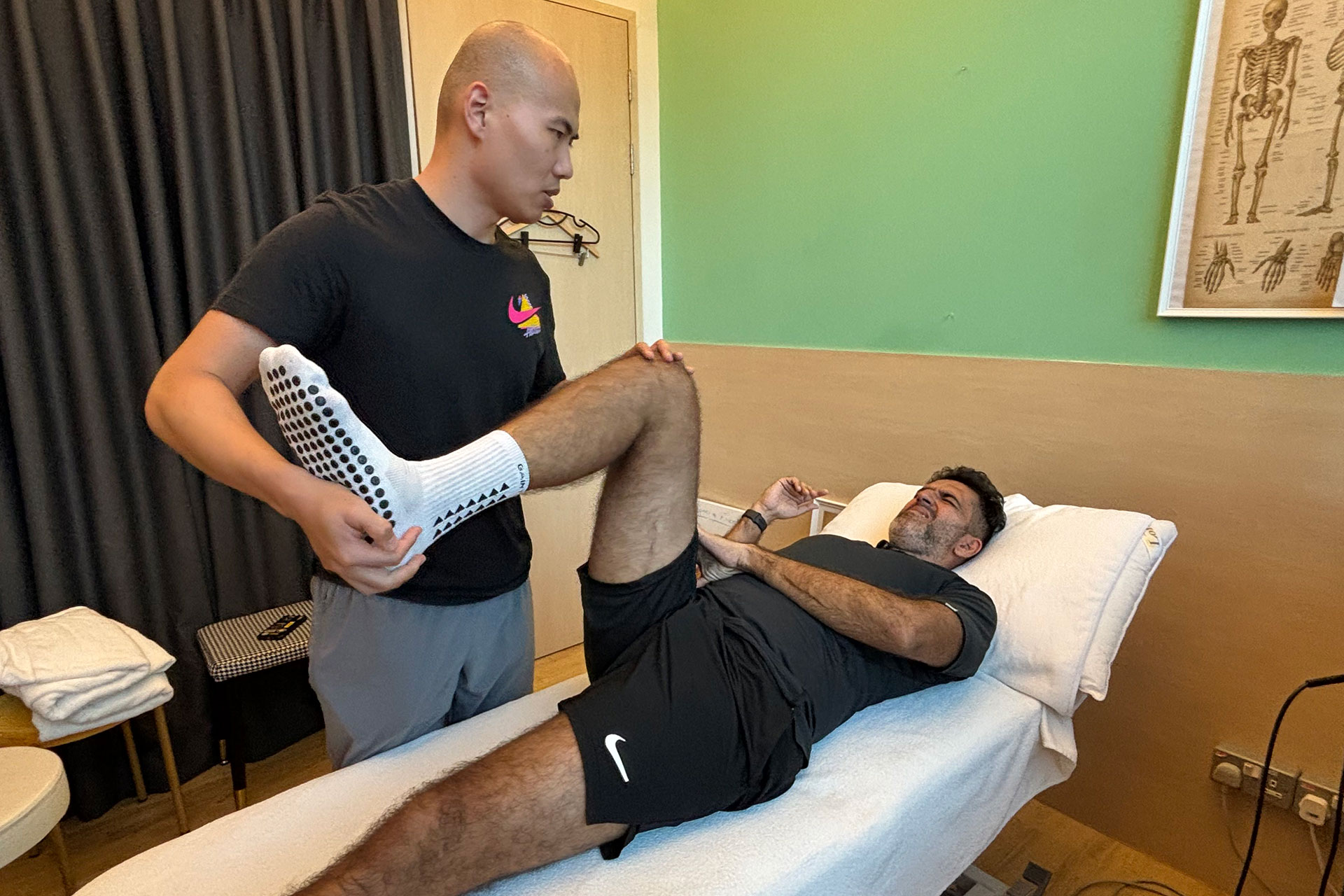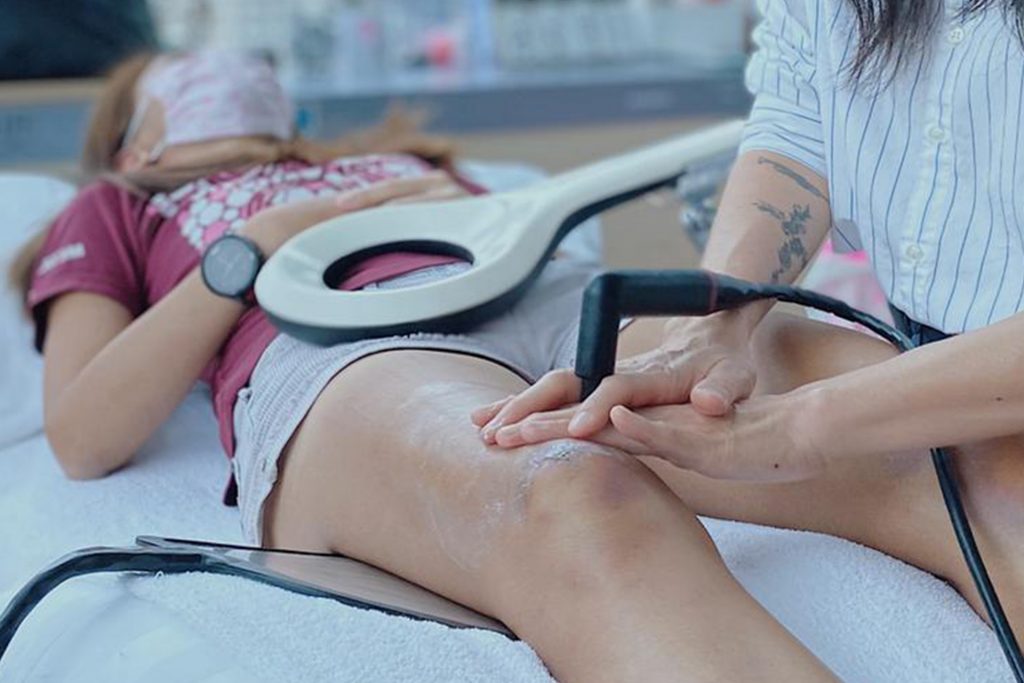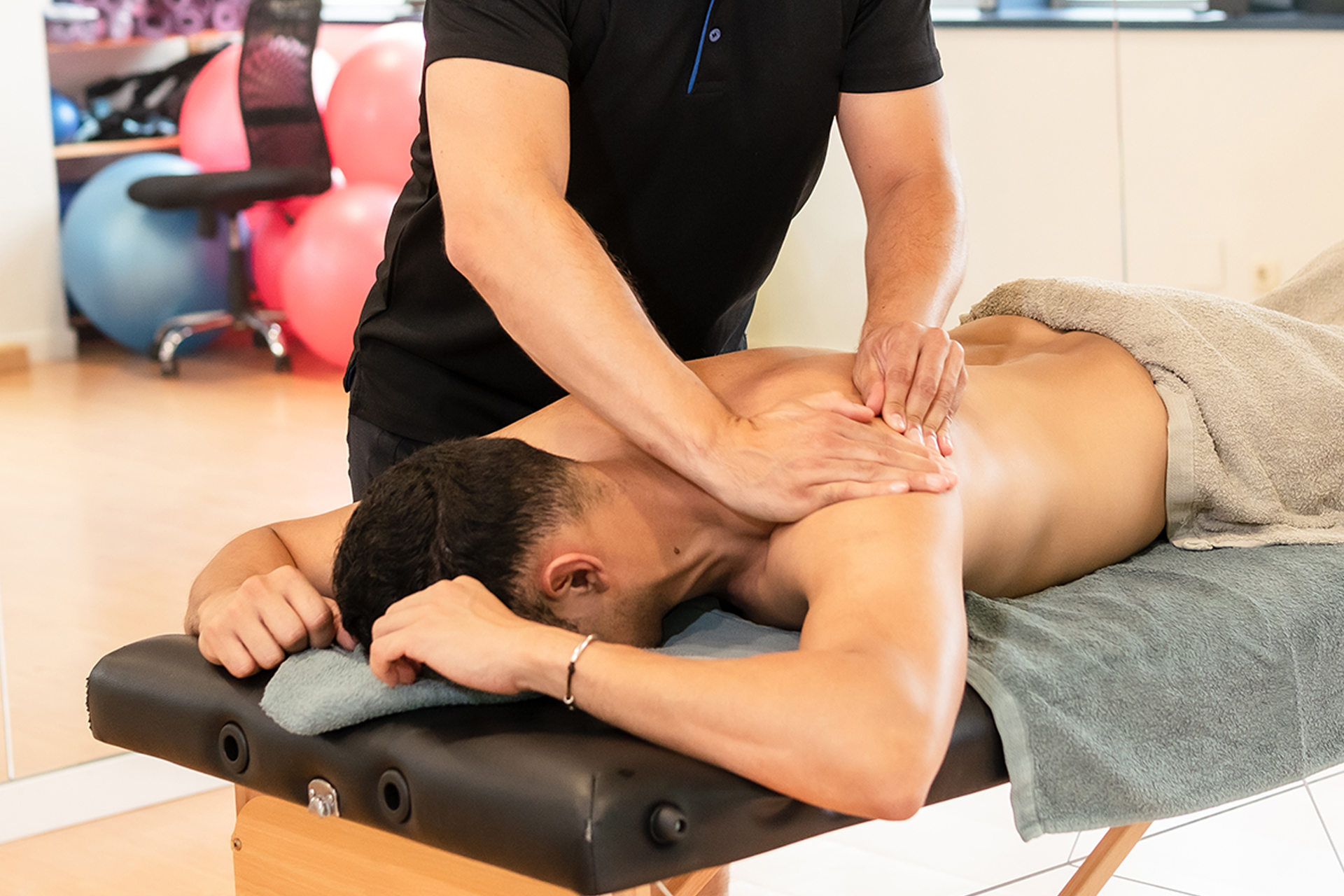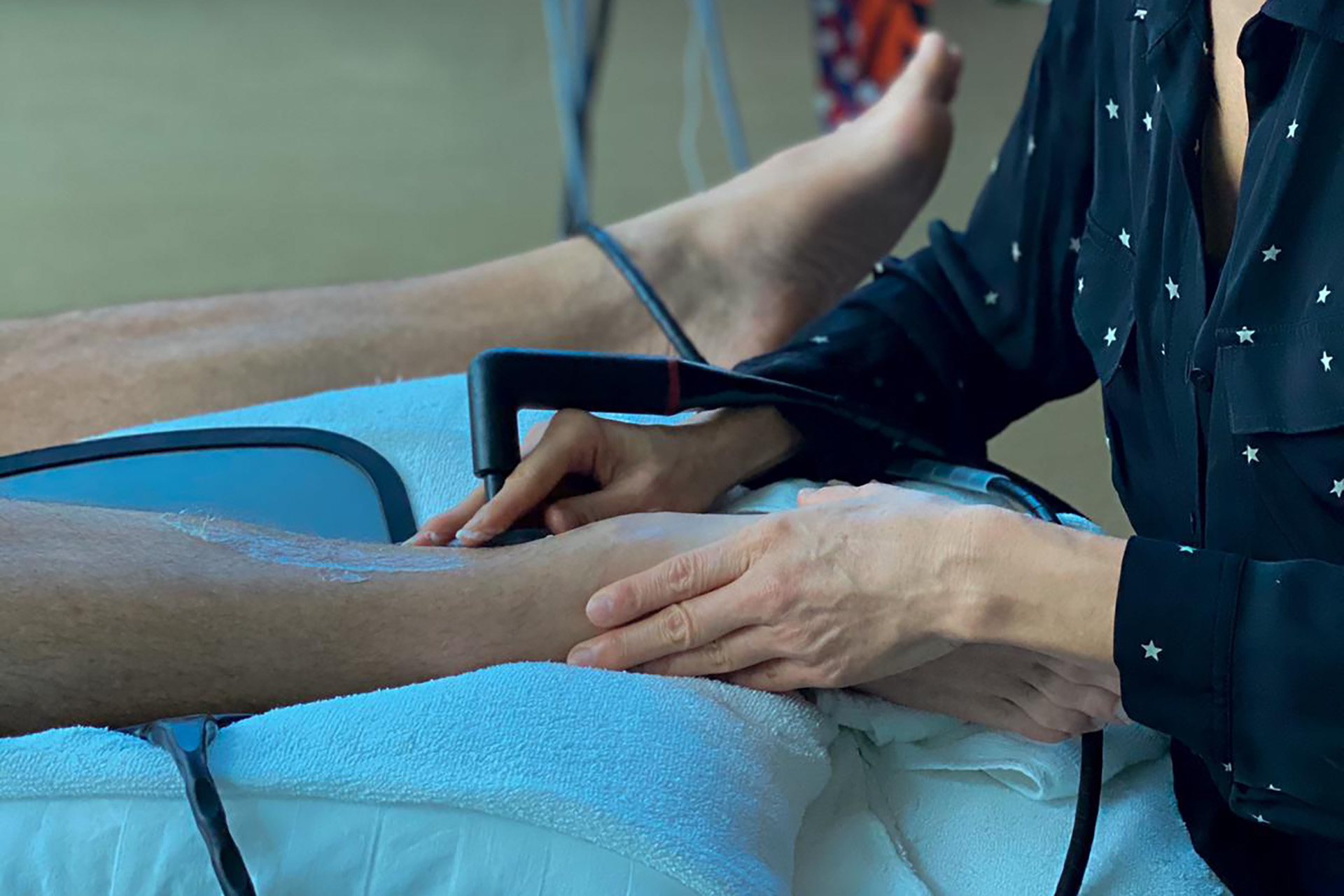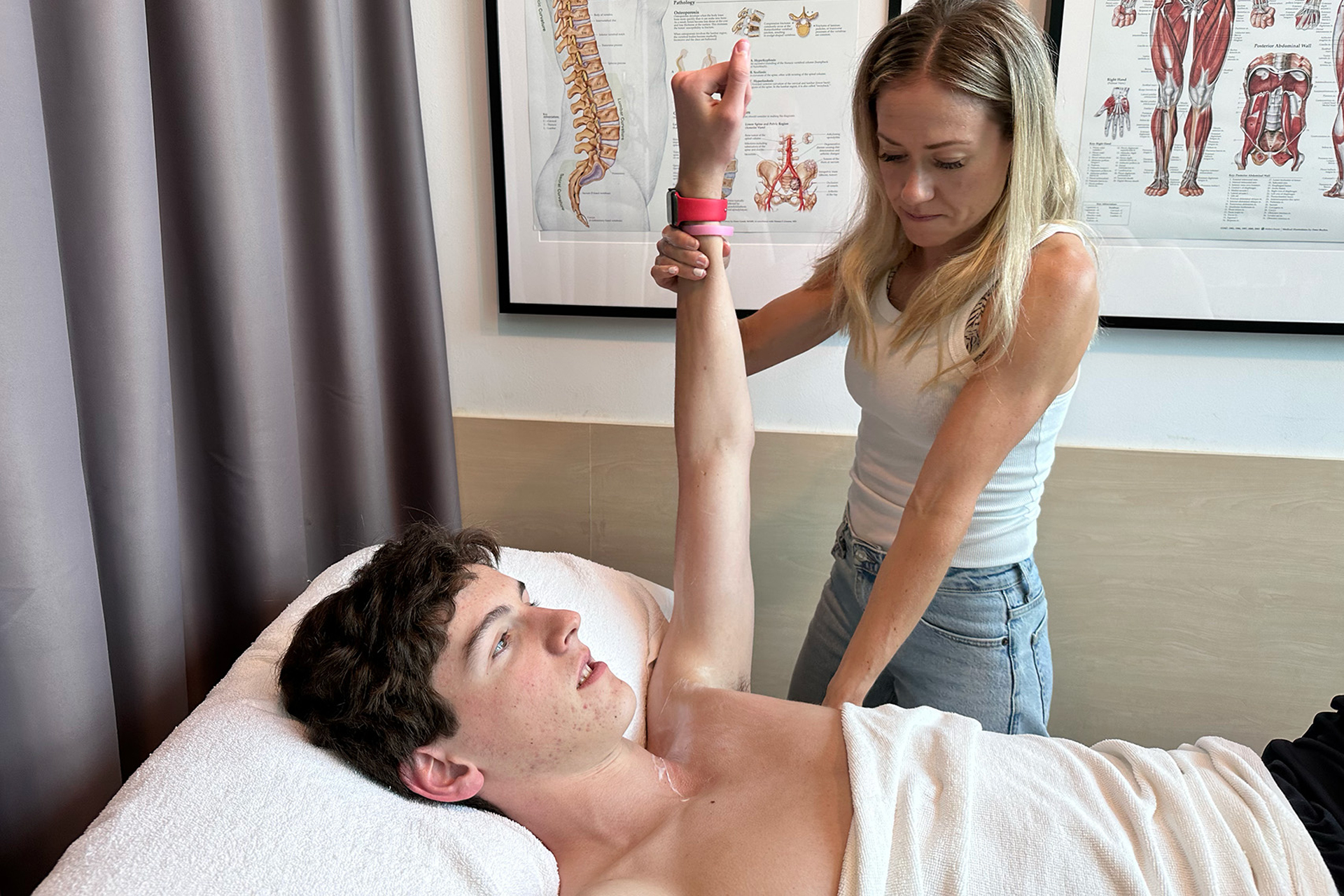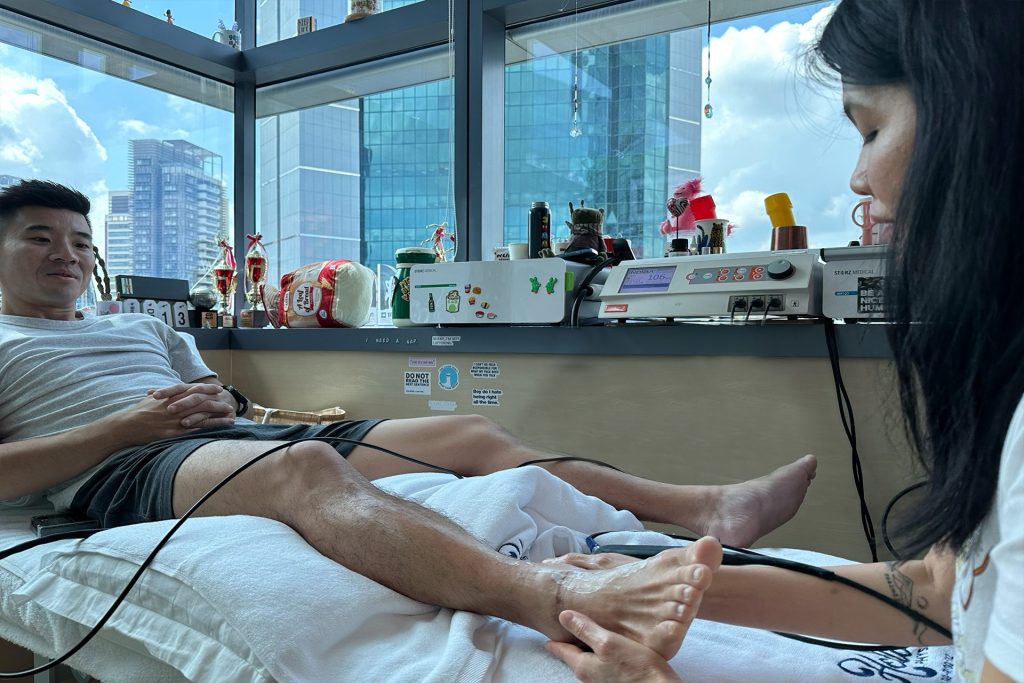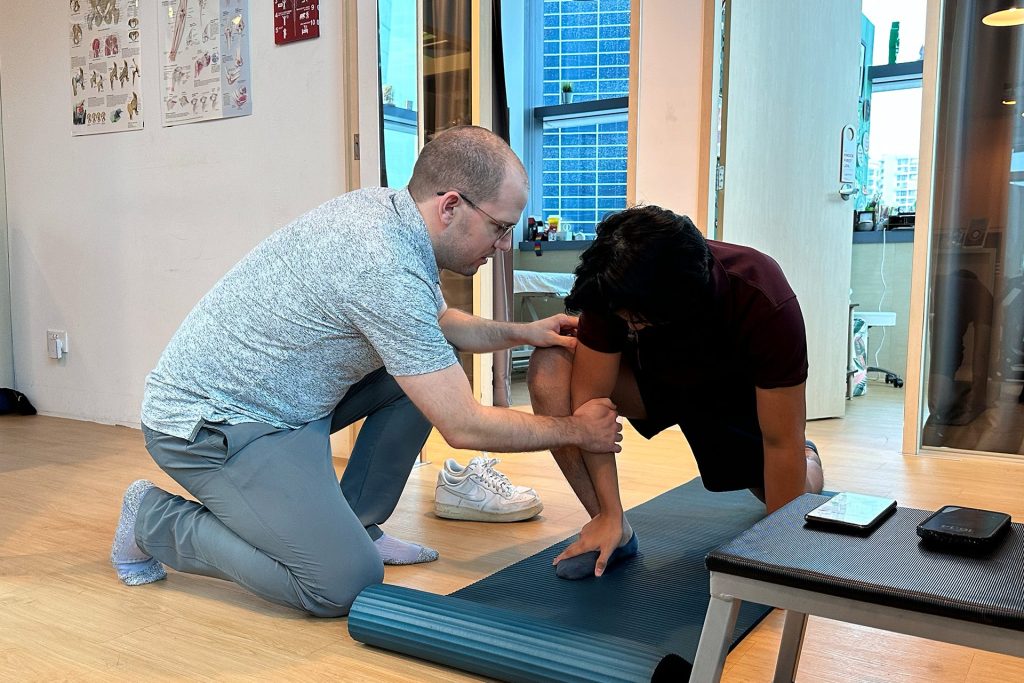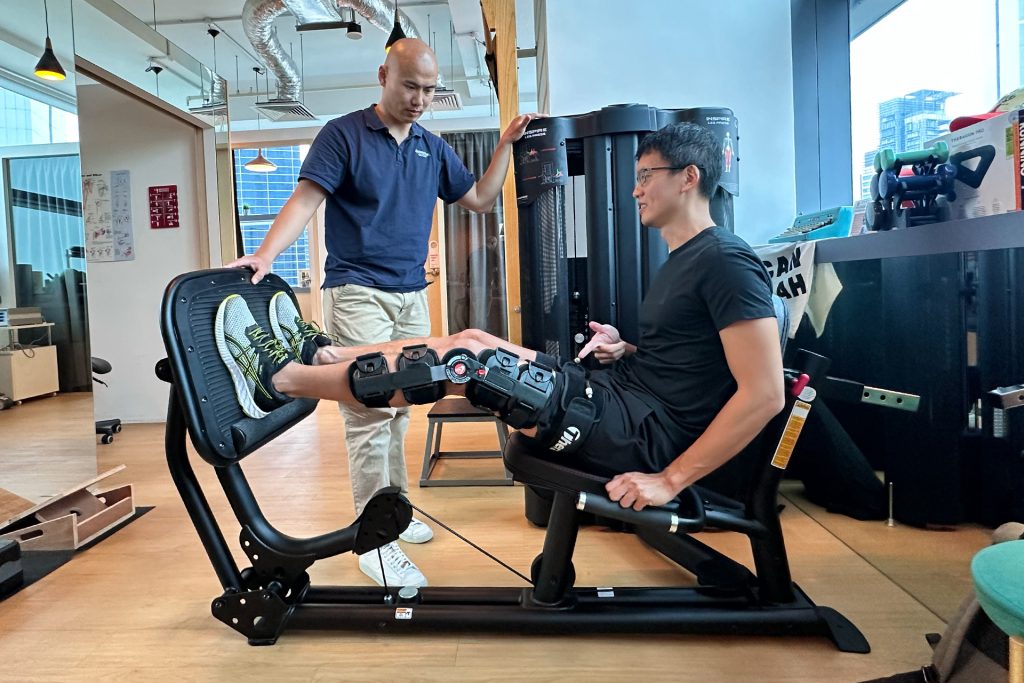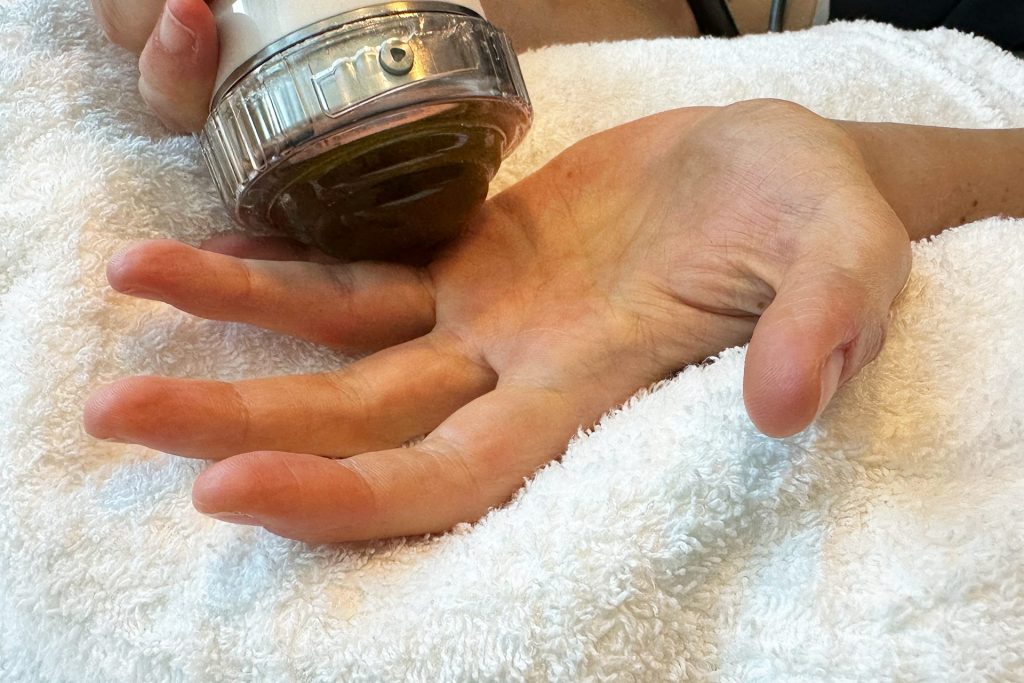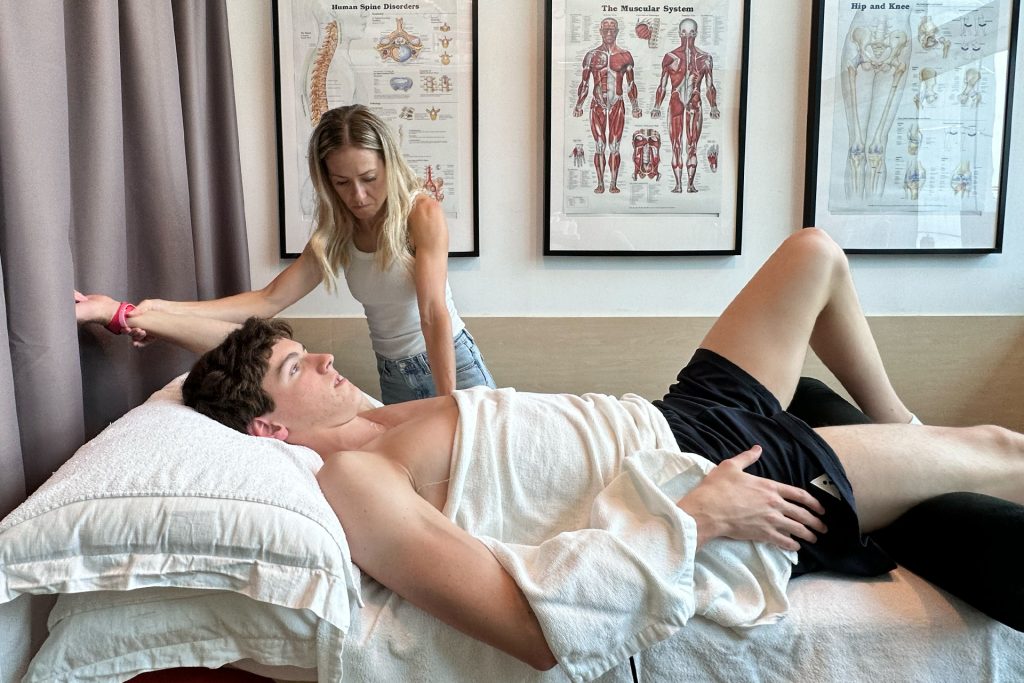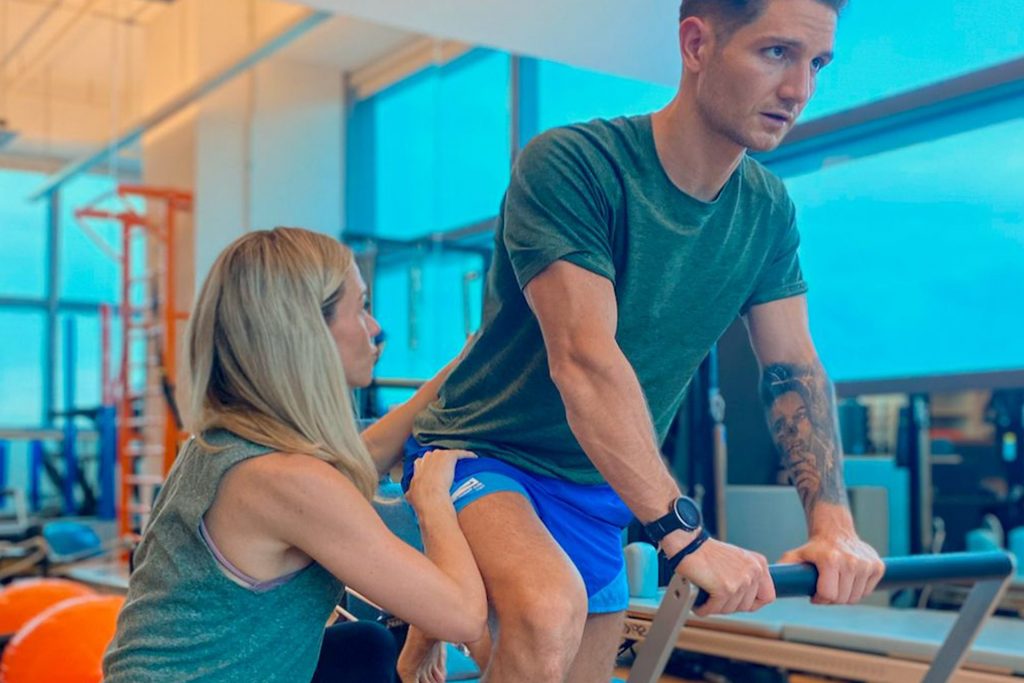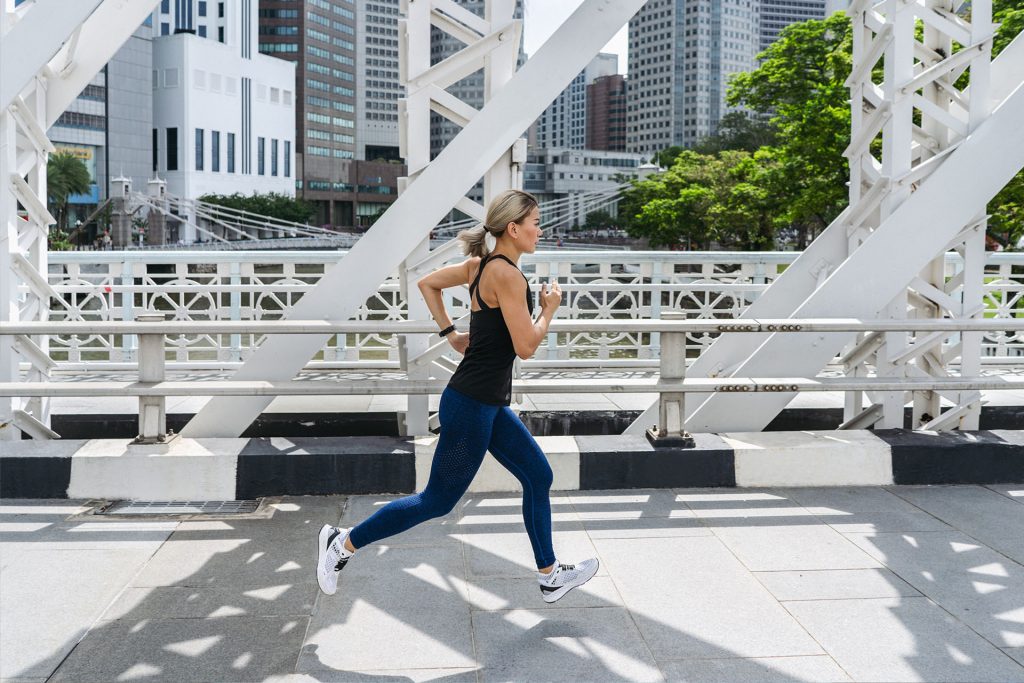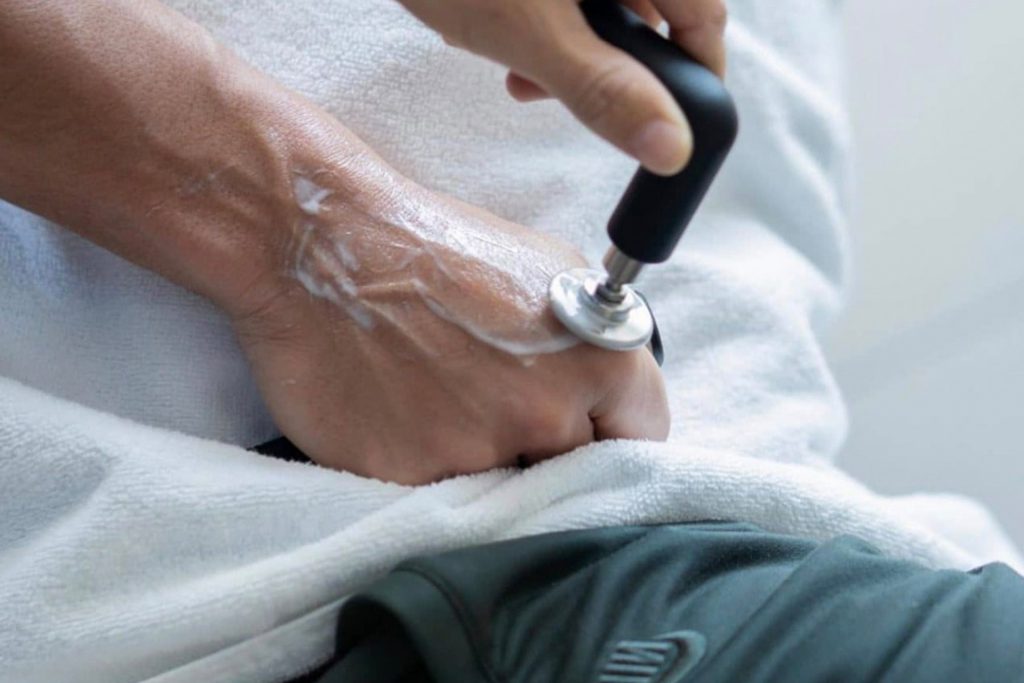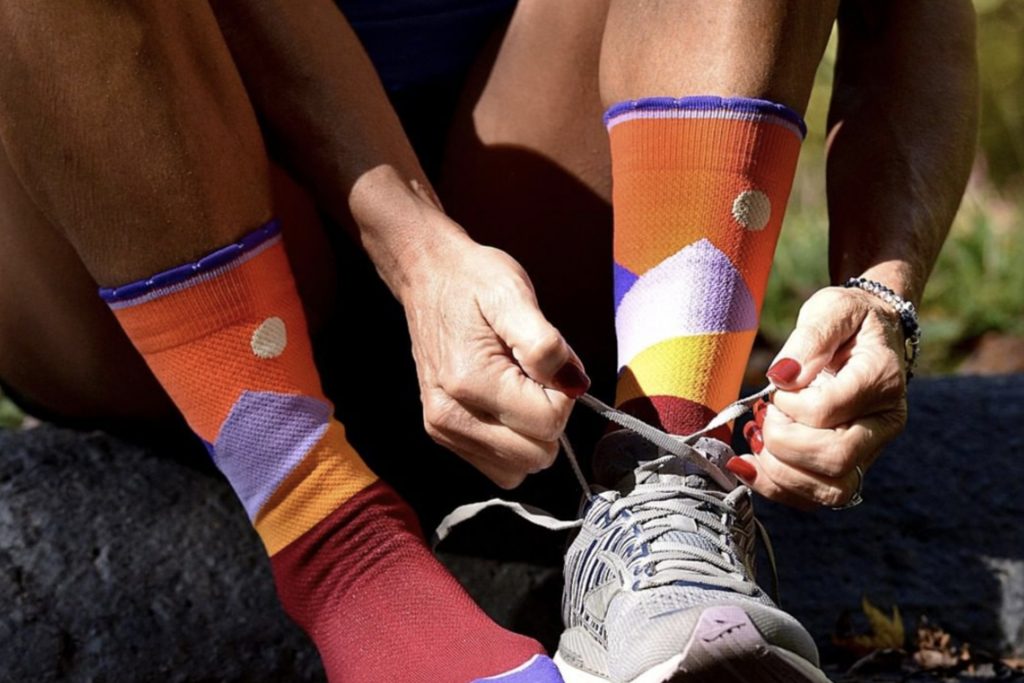|
Getting your Trinity Audio player ready...
|
Tailbone pain may seem like a minor issue, but its impact on daily life can be significant. Tailbone pain can cause discomfort at your desk, sharp pain when getting up, and affect how you move, work, rest and exercise. This condition, medically known as coccydynia, can disrupt your daily routines. However, with tailored physiotherapy and guided recovery strategies, you can achieve lasting solutions to coccydynia that go beyond quick fixes. You can manage or relieve your pain with the right approach.
What Is Coccydynia?
The tailbone or coccyx is a small triangular bone at the bottom of the spine. It anchors several pelvic muscles and ligaments, playing a crucial role in weight-bearing when seated. When inflamed or injured, it can cause persistent pain that worsens with pressure, resulting in increased tailbone pain when sitting down and getting up. Although the coccyx is a small structure, tailbone pain when sitting can have a significant impact on quality of life.
For some, the discomfort may come on suddenly after a fall. For others, factors such as poor posture, repetitive strain or prolonged periods of sitting on hard surfaces can cause tailbone pain. Whatever the trigger, the result is the same: pain that can interfere with your work meetings, long-haul flights, or even leisurely meals.

Common Causes of Tailbone Pain
A common cause of coccydynia is acute trauma, such as a fall directly onto the coccyx, causing bruising or fracture of the bone. Prolonged sitting, especially on hard, narrow or unsupportive surfaces, can cause tailbone pain by gradually irritating the area. Childbirth can cause tailbone pain as the coccyx may be stressed or displaced during delivery. Weight fluctuation, whether weight gain or loss, can also cause tailbone pain as changes in pressure or cushioning alter how the coccyx bears your weight when seated.
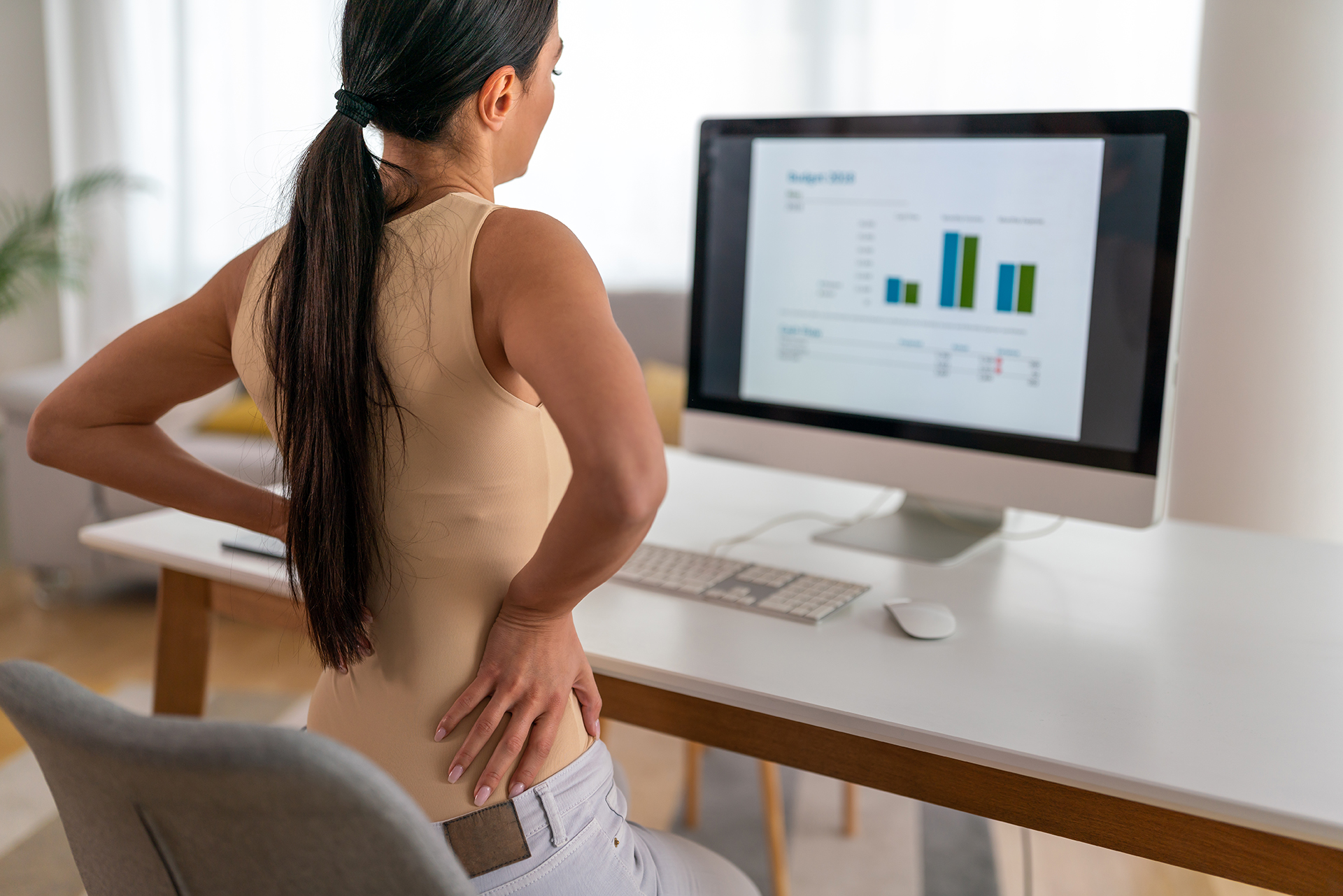
The Mechanics of the Pain
Tailbone pain is rarely just about the bone itself. An intricate web of ligaments, tendons and pelvic floor muscles surrounds the coccyx. When one part of this system becomes inflamed or overloaded, the pain can radiate through the area. For example, tight or weak muscles in your pelvic floor can pull on the coccyx, creating tension that worsens with prolonged sitting.
Inflammation is often at the heart of the sharp pain in the tailbone when sitting. Prolonged irritation or strain leads to swelling, which reduces mobility and increases sensitivity. This can trigger a cycle: inflammation leads to pain, pain changes your movement pattern, and altered movement further irritates the area.
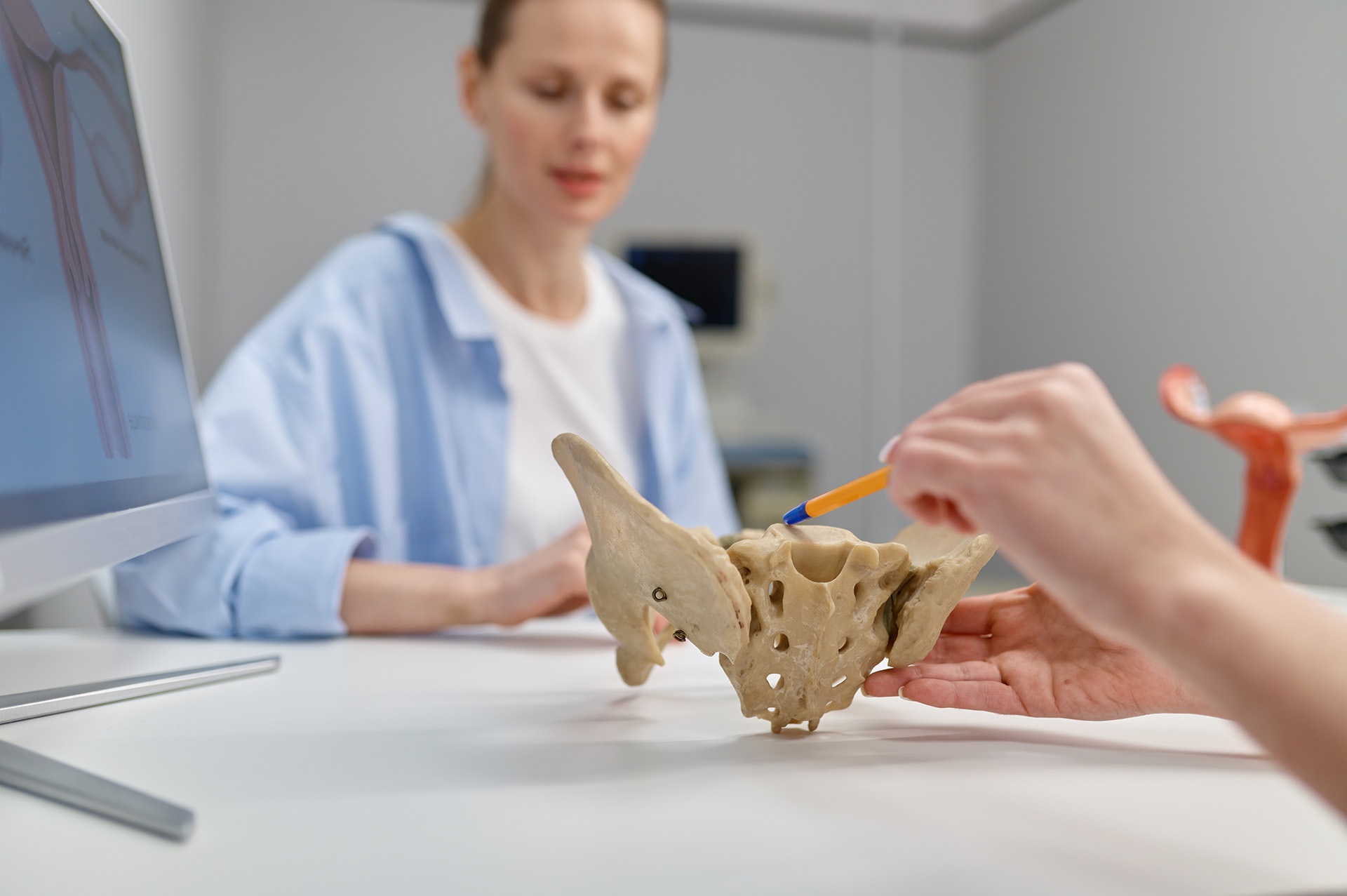
What Are the Symptoms of Coccydynia?
Common symptoms of tailbone pain include tenderness, aching and occasional sharp pains in your tailbone area. It may become more pronounced when transitioning from a seated to a standing position, especially after prolonged periods of being stationary. Some people describe a sharp pain in the tailbone when sitting that lessens once they’re up and moving. Others find the pain extends into the lower back, buttocks or even down the legs, particularly when inflammation is present in the pelvic region.
Discomfort during bowel movements or sexual activity may also indicate coccyx pain as the surrounding muscles and nerves are intricately connected. If symptoms persist beyond a few days or start to affect your sleep and daily function, it’s time to seek treatment.
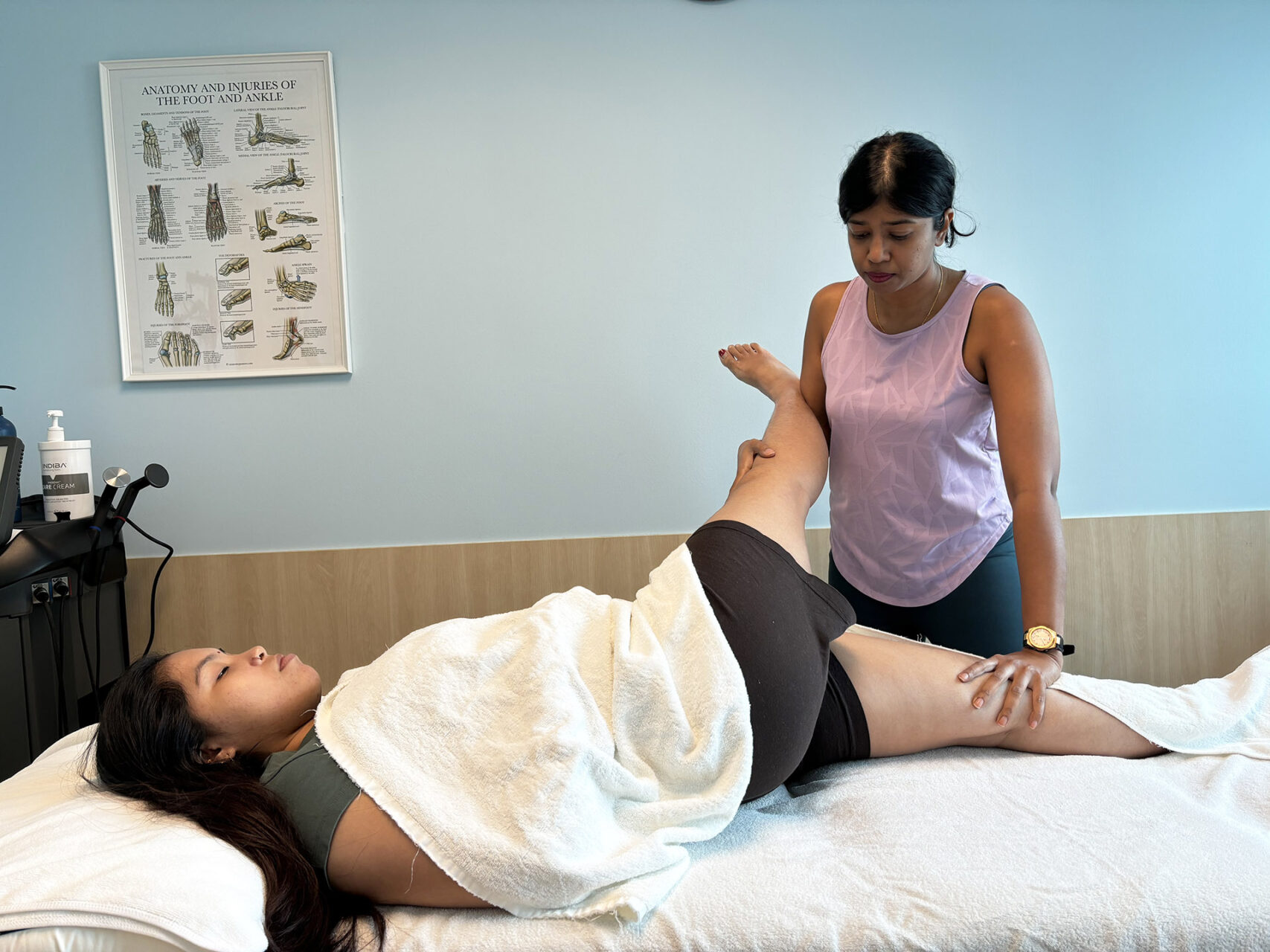
Can Tailbone Pain Go Away Naturally?
For most people, tailbone pain is typically temporary and resolves without requiring extensive treatment. This is especially so if the cause of the pain is minor.
However, if you have tailbone pain that persists beyond a few weeks, becomes more severe or is accompanied by other symptoms, it’s best to consult a physiotherapist. Sometimes the causes of tailbone pain may be more serious, such as a fracture, infection, or even a tumor at the base of your spine.
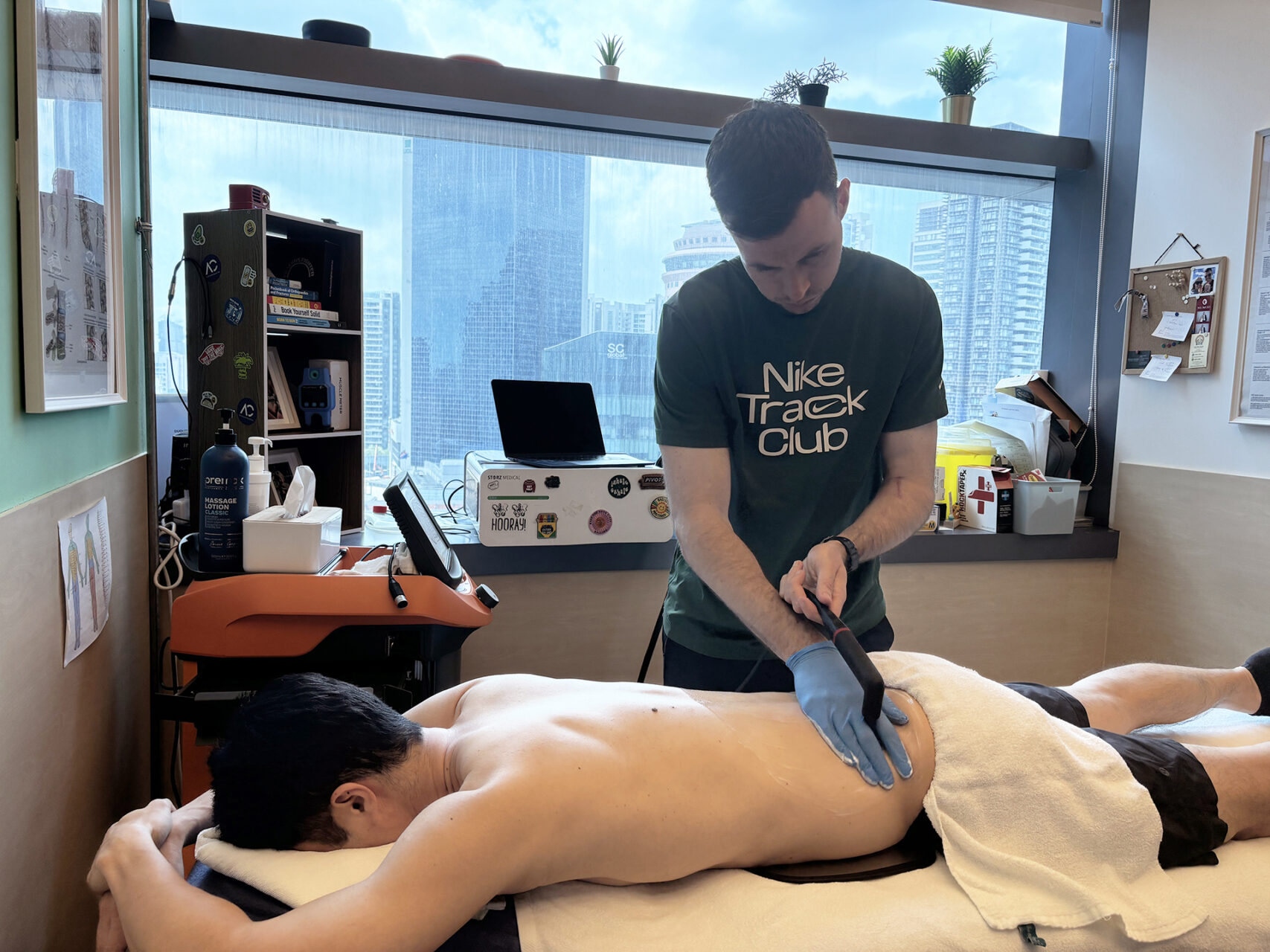
Managing and Treating Tailbone Pain
For mild or early-stage discomfort, a few lifestyle changes can make a big difference. There are specialized cushions available, such as wedge, U-shaped or donut cushions, that are designed to relieve pressure on the tailbone and make sitting more comfortable. Alternating between sitting and standing throughout the day also helps reduce strain on the coccyx and surrounding structures.
Heat and ice can be powerful tools. You can apply heat to encourage blood flow and muscle relaxation, and ice to reduce inflammation after flare-ups. Some people find temporary relief from over-the-counter anti-inflammatories. Use these with caution and as part of a broader strategy. Importantly, these only address the symptoms and not the actual cause of your tailbone pain. Physiotherapists can determine whether biomechanical imbalances, inflammation, muscle tightness, or underlying conditions cause the discomfort.
For some individuals, soaking the lower body in warm water can provide relief by soothing the coccyx and surrounding tissues. If hemorrhoids are contributing to your discomfort, topical treatments may be helpful as well. Gentle stretching exercises, especially those targeting the piriformis and iliopsoas muscles, can also help relieve tension around the tailbone. However, it’s best to do these exercises under the guidance of a physiotherapist to ensure safety and effectiveness.
At HelloPhysio, our team starts with a full assessment. This includes assessing posture, sitting mechanics, pelvic floor function and muscle engagement. Imaging may be required in some cases to rule out fractures or structural changes.
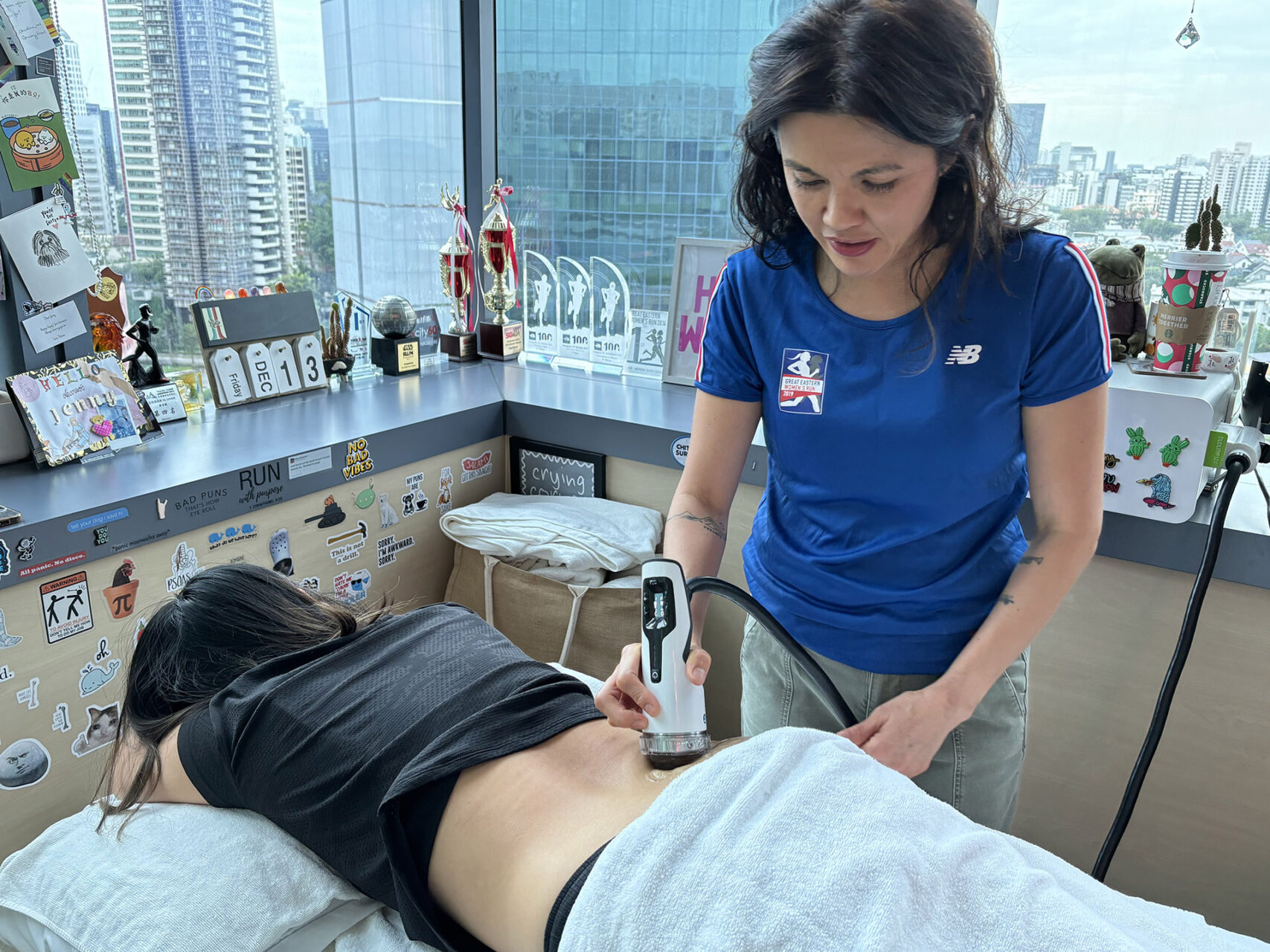
How Physiotherapy Helps Tailbone Pain
Physiotherapy for tailbone pain is more than just symptom relief. It addresses the root of the problem. Treatment often begins with gentle manual therapy to mobilize restricted joints and relax tight tissues. Targeted exercises are used to improve posture, enhance pelvic stability and retrain movement habits, as well as relaxation techniques to help relieve pain by relaxing the muscles around the pelvic area.
In many cases, we also use cutting-edge modalities to enhance recovery. INDIBA® Activ is one such therapy. This radiofrequency treatment promotes deep tissue healing, improves circulation, and reduces inflammation without discomfort. It’s beneficial for chronic tailbone pain when sitting down, as it accelerates cellular repair in irritated tissues.
Shockwave Therapy is another effective tool. By delivering acoustic energy into the area, it stimulates the body’s natural healing response. It also helps break up scar tissue and desensitize nerves, making it ideal for stubborn or recurring tailbone pain.
Our therapists will provide you with practical advice on setting up ergonomic workstations, using coccyx cushions properly, and exercises that support long-term coccyx health. With the proper support, many patients find they can not only relieve pain, but also return to activities they enjoy without restriction.
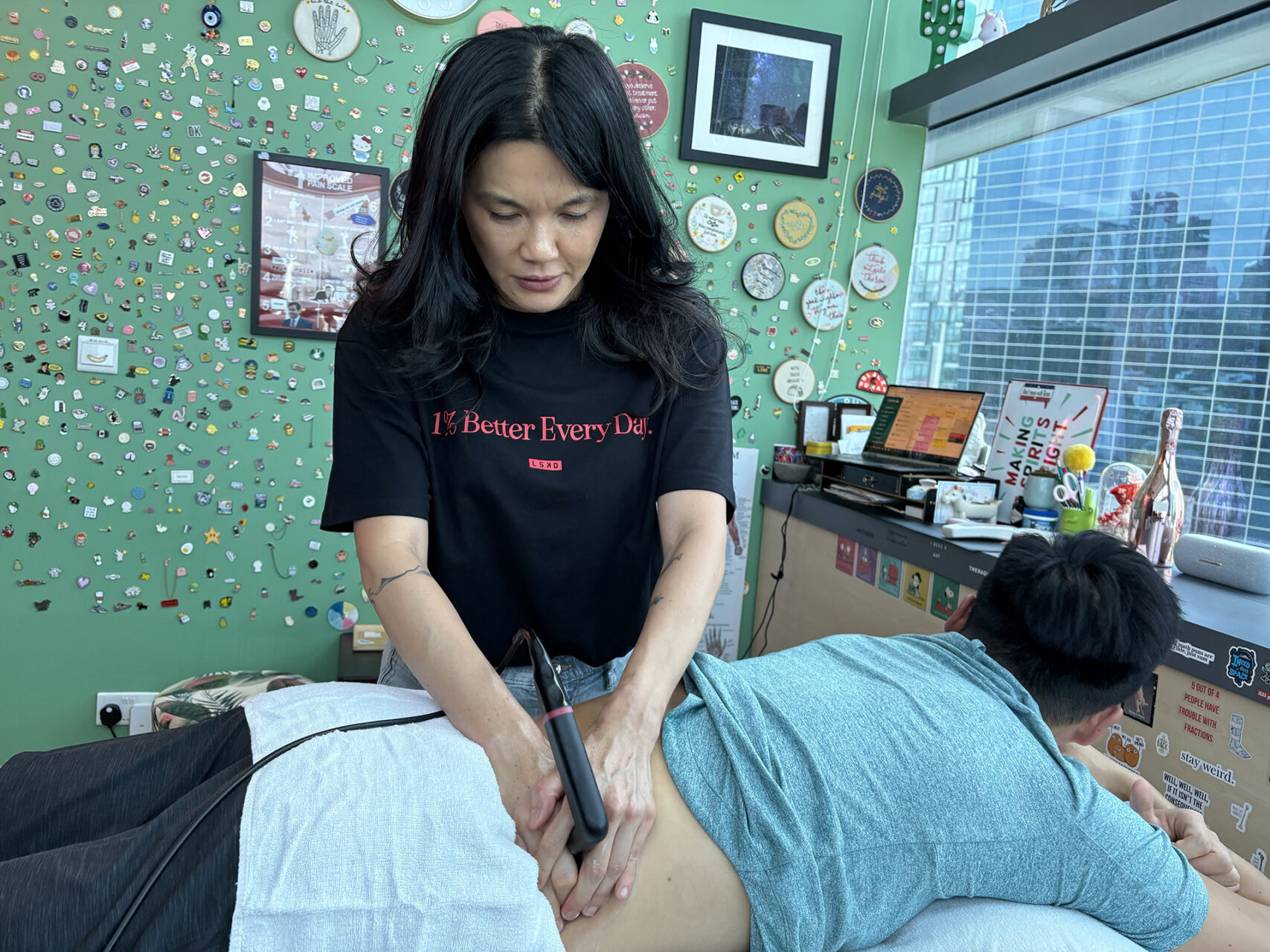
Tailored Recovery and Prevention
Tailbone pain when sitting doesn’t have to be a daily burden. Whether your discomfort is new or has been lingering for months, there are proven solutions that offer more than temporary relief. At HelloPhysio, we take a holistic, evidence-based approach to healing, combining physiotherapy with advanced modalities like INDIBA and Shockwave Therapy to promote recovery at the source.
Ready to take the pressure off your tailbone and move pain-free? Contact our team for a consultation.

